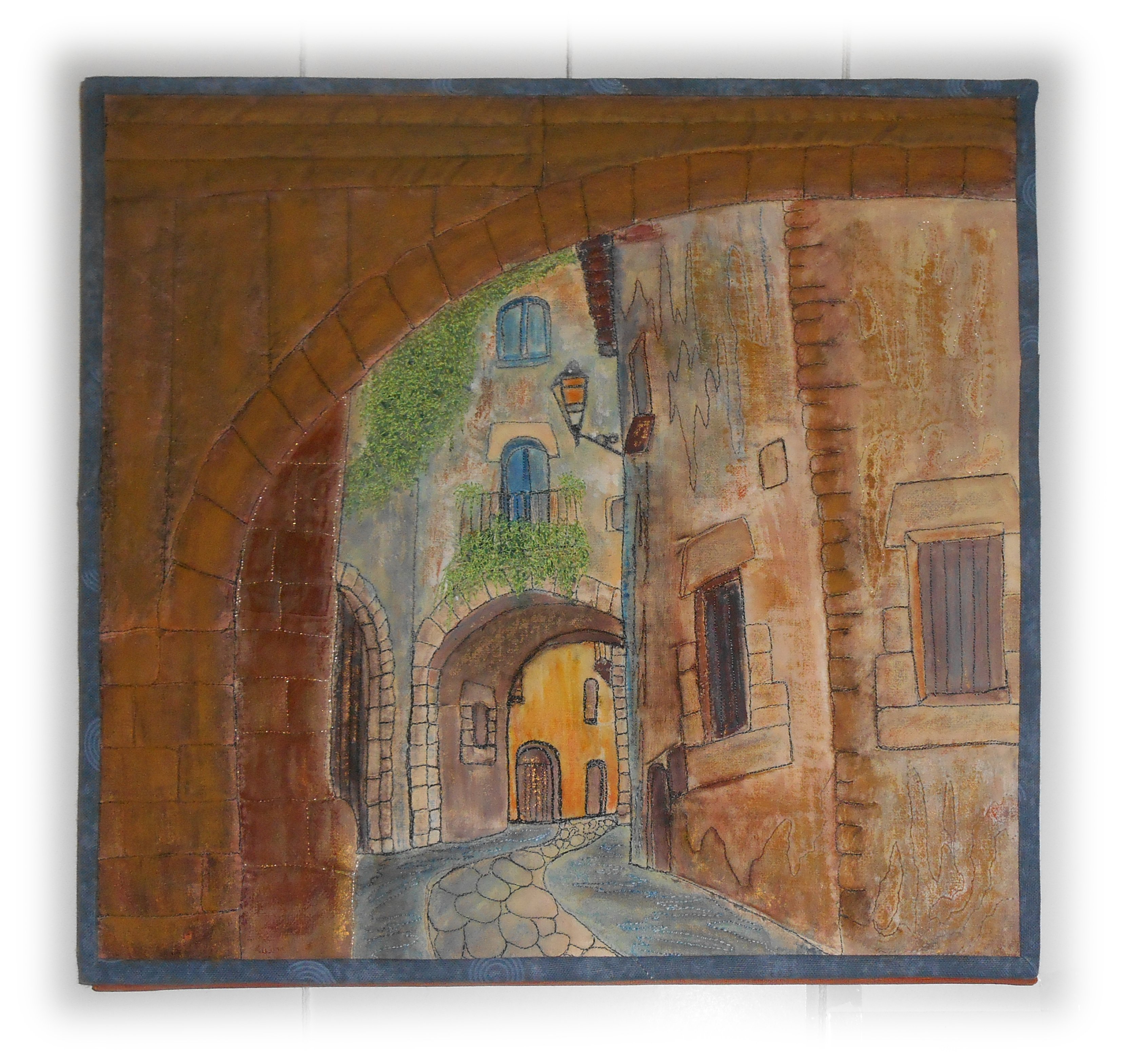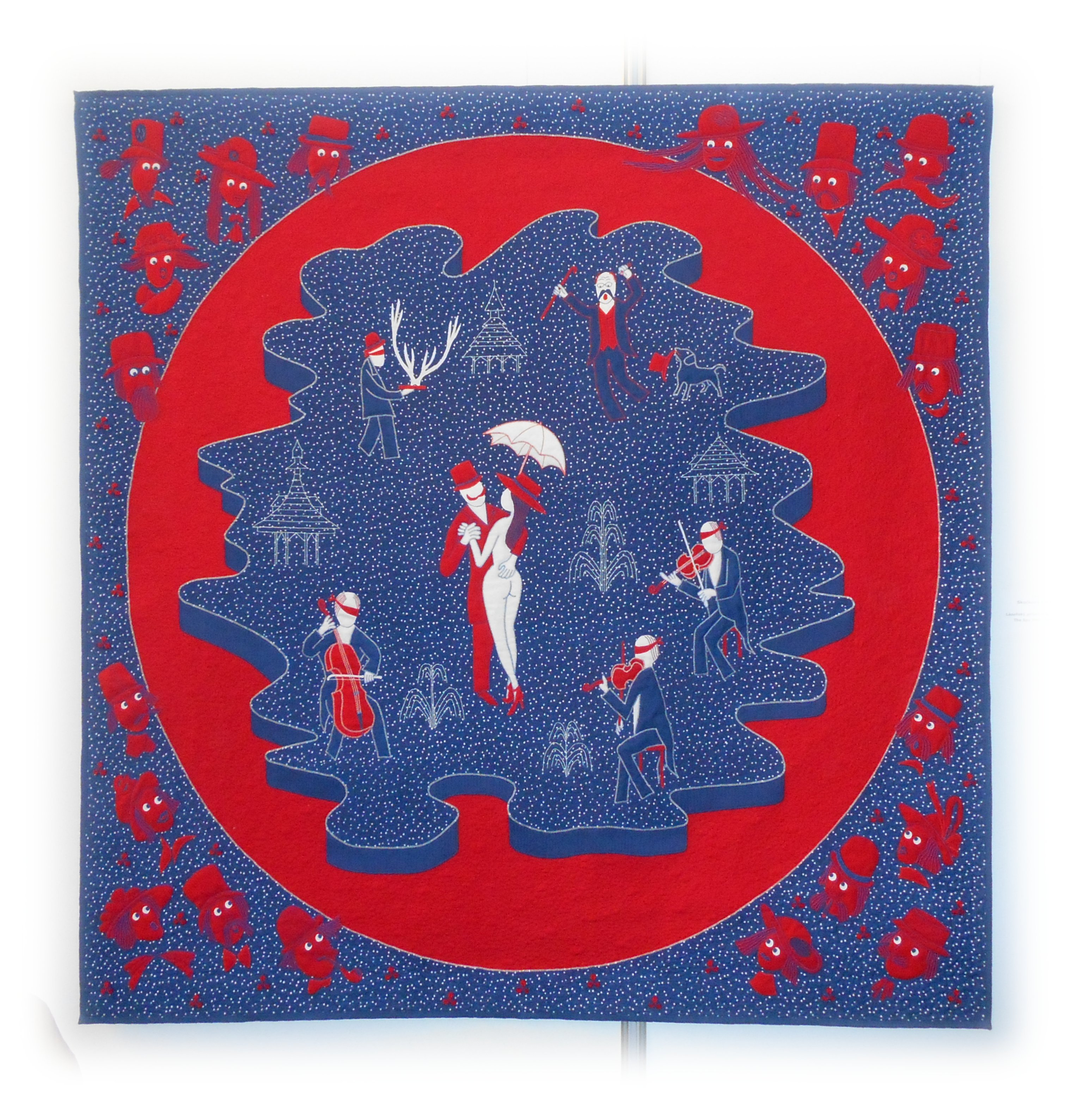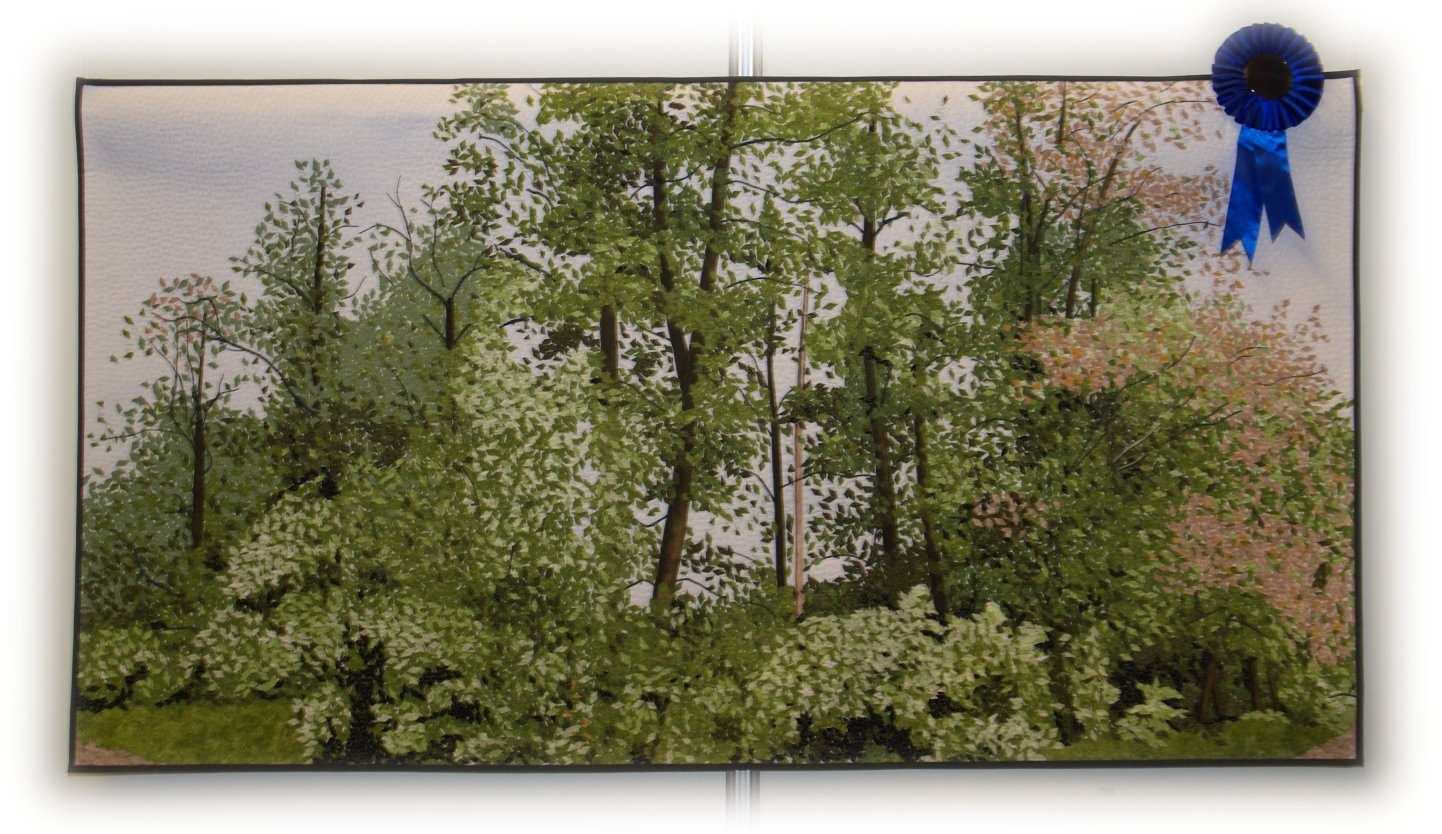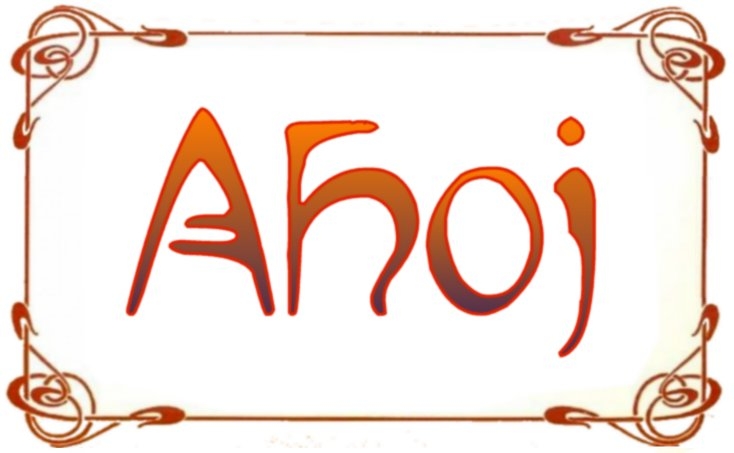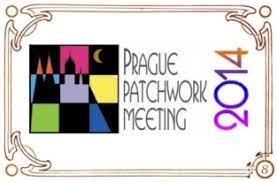
È un bel mistero. Anzi, più di uno.
Cominciamo dal più famoso: Prague.
Chi ci viene, da turista standard ovviamente, è attirato dal fascino degli antichi misteri praghesi, gli alchimisti rudolfini, il Golem di Rabbi Loew, l’estremo sacrificio di San Giovanni Nepomuceno, il ghetto ebraico con annesso cimitero, il mito di Franz Kafka, le tre giovani promesse spose della casa Rott, il cavaliere Bruncvik e il suo leone, e altro ancora.
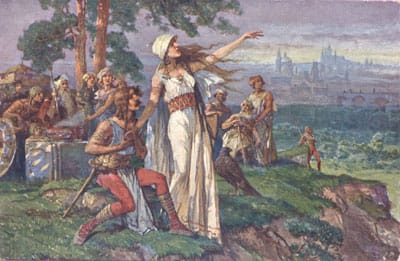
In effetti il mistero è come abbiano preso piede così stabilmente queste leggende, certo non così famose come quella di Libuše e del suo sposo Přemysl, ma senz’altro più redditizie.
Allora facciamo un po’ di luce.
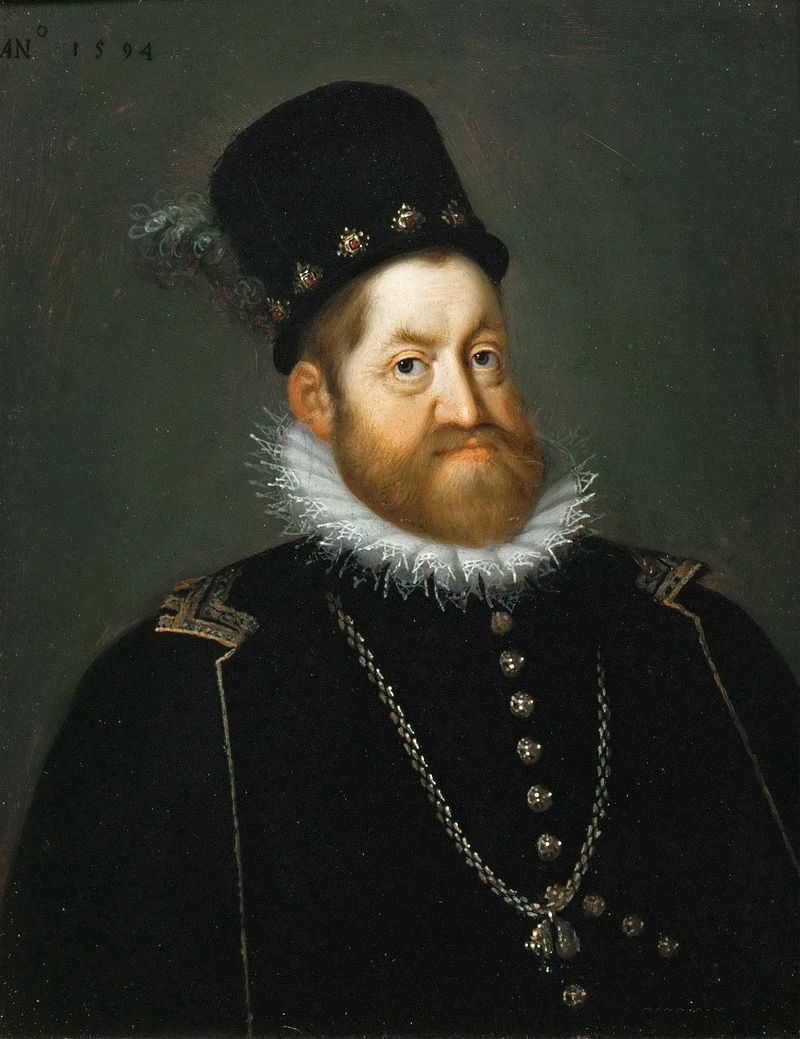 L’imperatore Rodolfo II d’Asburgo, prima di perdere il senno, fu un grandioso collezionista e un generoso mecenate.
L’imperatore Rodolfo II d’Asburgo, prima di perdere il senno, fu un grandioso collezionista e un generoso mecenate.Dürer, Bruegel il Vecchio, Veronese, Parmigianino, per non parlare dell’Arcimboldo, sono solamente alcuni degli artisti apprezzati dall’imperatore, il quale poteva vantare una pinacoteca insuperabile (e forse insuperata).
Tycho Brahe e Johannes Kepler trovarono a Praga il sostegno morale e materiale che le loro rispettive patrie avevano ottusamente negato.
Per dare lustro alla “sua” capitale, Rodolfo attirò presso la corte i più famosi gioiellieri e intagliatori di pietre dure. Per la sua corona, poi diventata corona imperiale d’Austria, vennero utilizzati 8 grandi diamanti, 186 brillantini, perle, rubini, e un grande zaffiro proveniente dal Kashmir.
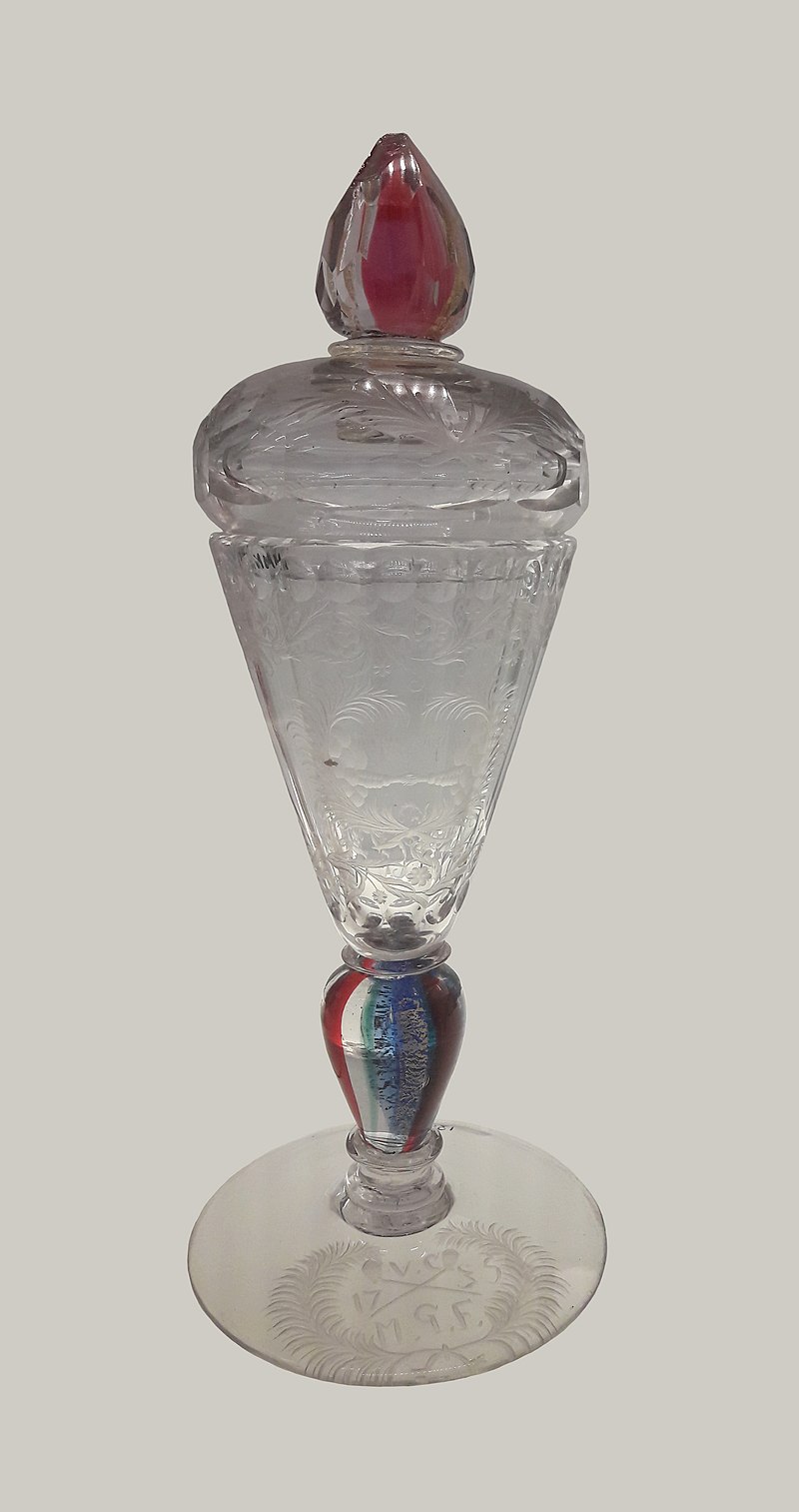 It was during the reign of Rudolf II in Prague who started working quality glass, today best known as Bohemian crystal, thanks to the inventiveness of a certain Caspar Lehmann from the Westphalia.
It was during the reign of Rudolf II in Prague who started working quality glass, today best known as Bohemian crystal, thanks to the inventiveness of a certain Caspar Lehmann from the Westphalia.Certo, like any big city, past and present, Prague attracted snake oil salesmen, cheaters, would-be occultists and charlatans of all kinds, ready to steal the good faith (and the money) the shift gullible.
Although they had their own following among the populace or in the palace of some enriched baron and uncultivated, at court they were never uncritical welcome, indeed most of the time were promptly banned from Britain (and was still going well as in other parts of Europe for them was of use capital punishment).
The two most famous, John Dee e Edward Kelley, fecero entrambi una ben misera fine dopo aver cercato di spacciarsi per sapienti in contatto con gli angeli del Paradiso.
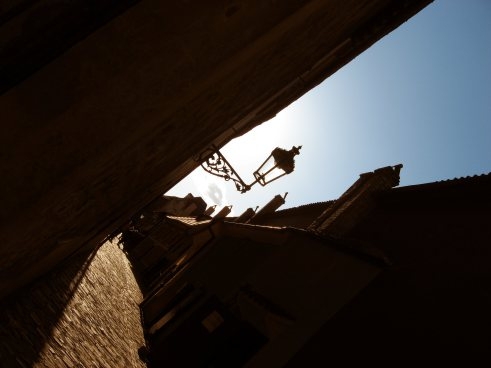
Eppure oggi tutti i turisti che si accalcano nella Zlatá Ulička, il Vicolo d’Oro presso il castello, si immaginano l’imperatore Rodolfo II circondato da alchimisti di ogni sorta alla ricerca dell’aurum potabile, oppure affondato tra arcani testi cabbalistici o di astrologia, e così il vicolo diventa veramente d’oro grazie cospicui redditi ricavati dalla vendita di ammennicoli e souvenir che si ispirano a questa fantomatica aura di magia.
Che ve ne pare, è un mistero o è solamente business?
Procediamo.
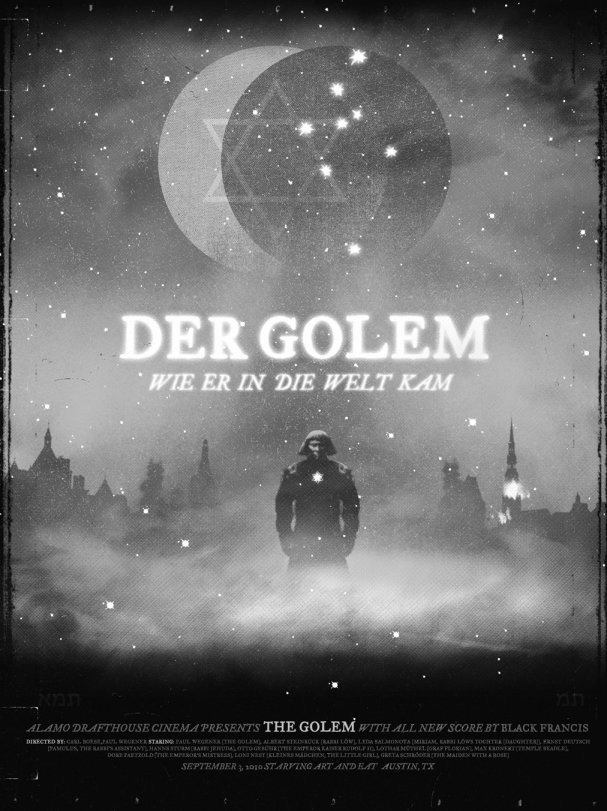
Nel lontano (ma neppure tanto) 1915 usciva nelle sale cinematografiche “Il Golem”, un film ispirato alla leggenda del gigante d’argilla creato nel XVI secolo da un potente rabbino del ghetto ebraico di Praga, rabbi Loew.
In realtà (la realtà sulle origini di questa leggenda e non la realtà di un essere immaginario) già nel XII secolo, a Worms, 500km da Praga, in un trattato mistico venne ipotizzata la creazione di un Golem mediante un rituale magico. Invece in nessuna parte della ponderosa documentazione lasciata da rabbi Loew si accenna a un Golem, pertanto è da escludersi un suo collegamento con questa leggenda, neanche ipotetico.
È probabile che la storia del Golem abbia viaggiato nei secoli come fiaba orale, forse per spaventare i bambini, forse per vaticinare una protezione suprema contro un sempre possibile pogrom, fatto sta che nel 1838 un certo Klutschak, giornalista di belle speranze, pubblicò alcuni racconti suggestivi sul vecchio cimitero ebraico, sul famoso rabbi e sulla sua creatura d’argilla: il Golem (anzi, sbagliando, il Golam). Dieci anni dopo questo racconto di fantasia fu ripreso da altri autori, con maggior risonanza, fino ad arrivare alla ribalta mondiale della settima arte, diventando oggetto di credulità generale tra coloro che cedono volentieri al fascino dell’occulto.
Vorrei far notare una piccola coincidenza temporale.
Nel 1818 usciva nelle librerie “Frankestein o il Prometeo moderno”, un romanzo gotico della giovanissima Mary Shelley, ripubblicato poi nel 1831. Potrebbe darsi benissimo che Klutschak, visto il successo del best seller londinese, abbia pensato bene di dare forma scritta a quella storiella del ghetto per ricavarsi una fettina di celebrità.
Really a mystery from peanuts.
 Next.
Next.
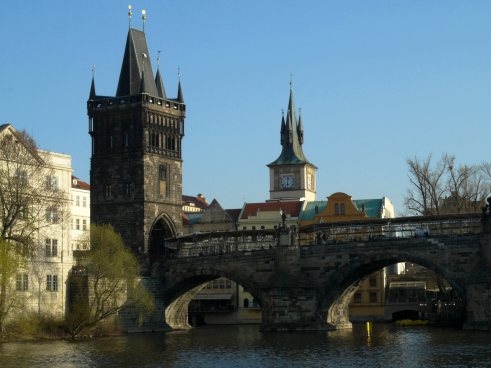
as commands “The perfect tourist guide in Prague”, is a must the painful crossing of the Charles Bridge in the hour Maximum crowding. who, following the classic pattern “stop and go” you get, prima o poi, before the statue of St. John of Nepomuk and, as detailed instructions, you must tap with his left hand to secure the headstone 10 years of luck. It is not specified if natural lefties should touch her with his right hand. When in doubt, better to refrain, could get 10 years of bad luck.
It must be said that the Charles Bridge was not called that at the time of Charles IV (that she not even saw it finished), It was called the Prague Bridge or Stone Bridge, stop. only in 1870, for opposing nationalist demands, venne tirato in ballo il lussemburghese Carlo IV.
Le statue le hanno volute i gesuiti, quasi 300 anni dopo la costruzione, e comunque quelle che si vedono oggi sono solamente delle copie. Prima il ponte era un semplice ponte, essenziale e funzionale, nonché robusto, avendo preso a modello il ponte sulla Mosella costruito dai legionari romani 13 secoli prima (squadra che vince non si cambia).
 La leggenda narra che il povero Giovanni da Nepomuk fosse il confessore della regina. Il re, nutrendo dubbi sulla fedeltà della consorte, nel marzo del 1393 cercò di estorcere a Giovanni i segreti della di lei confessione, non esitando a ricorrere alla tortura. Non ottenendo risposte da Giovanni, il re lo fece annegare gettandolo nella Vltva (Moldava), e oggi nel fiume è visibile la lapide che indica il punto esatto dove Giovanni Nepomuceno, santificato nel 1729, fu gettato dabbasso (quale precisione storica!)
La leggenda narra che il povero Giovanni da Nepomuk fosse il confessore della regina. Il re, nutrendo dubbi sulla fedeltà della consorte, nel marzo del 1393 cercò di estorcere a Giovanni i segreti della di lei confessione, non esitando a ricorrere alla tortura. Non ottenendo risposte da Giovanni, il re lo fece annegare gettandolo nella Vltva (Moldava), e oggi nel fiume è visibile la lapide che indica il punto esatto dove Giovanni Nepomuceno, santificato nel 1729, fu gettato dabbasso (quale precisione storica!).
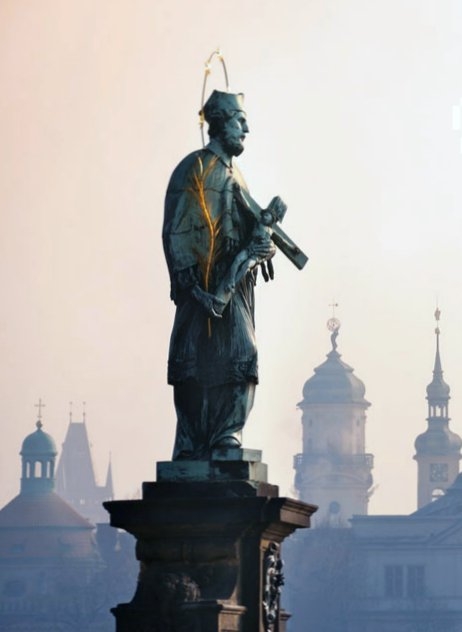
La realtà, as always, è assai meno romanzata, nonché meno interessante e perciò meno spendibile.
Giovanni da Nepomuk era un fidato consigliere dell’arcivescovo di Praga, in un momento nel quale tra quest’ultimo e il re si stava svolgendo una sotterranea (ma neppure tanto) lotta di potere.
Venceslao IV, detto “il pigro”, un giorno arrivò alticcio a una riunione coll’arcivescovo e i suoi consiglieri per dirimere alcune questioni di possedimenti e pedaggi. Durante la discussione, accecato dall’ira, dalla supponenza e dall’alcol, ordinò alle guardie di arrestare gli ecclesiastici.
Il vescovo riuscì a svignarsela, ma tra le grinfie del re rimasero i suoi consiglieri, i quali vennero torturati affinché rivelassero i piani della curia.
Giovanni non sopravvisse alle torture, e il re, per timore di una reazione popolare, ordinò che il cadavere fosse gettato di notte nel fiume. Il sovrano poco sapeva di idraulica, e ignorava il fatto che il fiume tende a restituire ciò che non è adeguatamente zavorrato, perciò il corpo con ancora visibili i segni delle torture fu ripescato più a valle dopo qualche settimana.
Il re se la cavò con poco in quanto il suo rivale, l’arcivescovo, preferì rimanere nascosto in un castello ben lontano da Praga.
Quindi nessun segreto confessionale da difendere a costo della vita, fu solamente la vittima sfortunata di una lotta di potere, lo stesso tipo di potere che volle santificarlo per contrapporlo al suo celebre coevo Jan Hus, sicuramente poco amato a Roma.
Si sa che in Vaticano i misteri sono custoditi gelosamente…
 Già che siamo nei paraggi andiamo a sondare un altro mistero.
Già che siamo nei paraggi andiamo a sondare un altro mistero.
Dal ponte Carlo, passando per Staré Město, si arriva a Josefov, ovvero la zona del ghetto ebraico.
Ah, qua il mistero dovrebbe essere di casa, qua si studiavano testi millenari, la gematria, la kabbala, il Talmud di Babilonia, Qliphoth e Sephirot, e chissà cosa ancora che ci è negato di sapere.
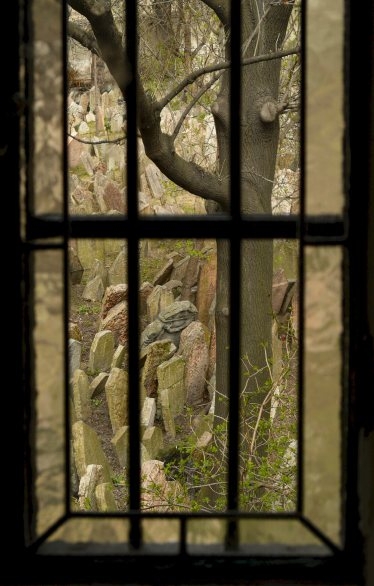
E invece no.
Ormai del ghetto ebraico non esiste più niente. Tutto venne raso al suolo a fine ‘800, e al posto delle vecchie abitazioni malsane e sovraffollate sorsero dei palazzi eleganti per i borghesi fin de siècle, oggi con negozi di grandi firme e ristoranti turistici al pianterreno.
Comunque già dopo la metà del XIX secolo il ghetto aveva perso gran parte delle sue caratteristiche peculiari, stretto tra i nuovi edifici popolari e dissanguato dalla perdita dei suoi componenti più facoltosi che avevano deciso di trasferirsi nei quartieri eleganti di Praga.
Unico testimone secolare, ma muto, resta il vecchio cimitero ebraico, centomila defunti in uno spazio ristrettissimo, molti dei quali sono diventati rami e foglie delle piante di sambuco che contribuiscono a una perenne penombra.
C’è una discreta fila per visitarlo, per non capire chi o cosa rappresentino le dodicimila lapidi, o perché anticamente quel posto venisse chiamato il giardino ebraico.
Per i più resta un mistero. 
A Josefov c’è la statua di Franz Kafka, uno dei fantasmi di Praga. Girovagando per le vie della città non è raro imbattersi sulla parete esterna di qualche edificio in qualcosa di simile: “qui visse Franz Kafka… ecc.”, e non mancano i riferimenti a questo scrittore, toponomastica, museo, negozi, caffè, gadget, come se egli fosse il nume tutelare di Praga, un monumento letterario alla città.
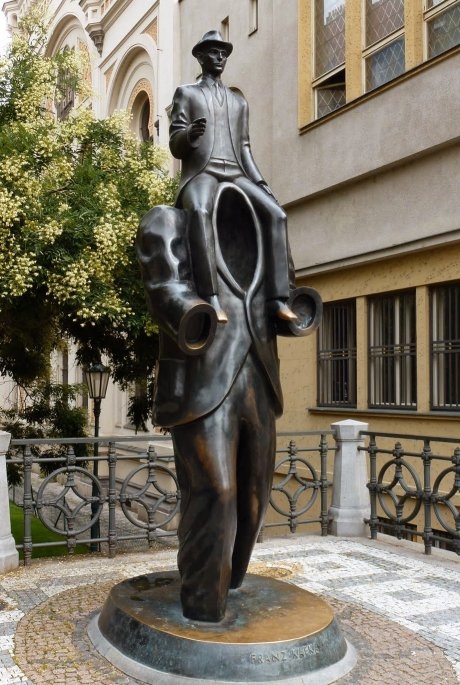
E invece no (ancora una volta).
Frankie non è di sicuro assimilabile alla Praga odierna, la Praga slava. Ebreo per nascita, tedesco di madrelingua, faceva parte di una minoranza di una minoranza di una minoranza, e in una città dilaniata da nazionalismi che influenzavano anche l’ambiente letterario, together with three other friends founded a circle that found its inspiration in a Prague devoid of artifice imagined that other artists to find.
He could see farther, beyond the hills of the city, beyond the narrow borders of the empire, over that time decorative and obedient. Not looking at Hradčany for its castles, labyrinthine and inexplicable, but to his world without meaning and without a way out.
In his most famous story “the metamorphosis”, Gregor Samsa is not transformed suddenly into a cockroach, anzi, the mutation She makes him return painfully human in a world of hard-working insects and resolute, a Kafkaesque world, positivist and energetic.
Another mystery is the mystery of the meaning of the term shift “Kafkaesque”.
For its inventor, namely Franz, era il mondo di suo padre, un uomo autoritario, imponente nella figura e nella presenza, una persona di un certo successo sociale, mentre oggi, in maniera inspiegabile, travisiamo completamente il significato originale, e amiamo definire kafkiana una situazione priva di senso logico o di uno sbocco ragionevole.
Quanti misteri a Praga! 
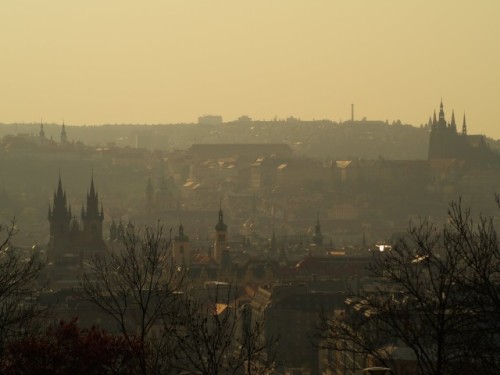
Ma il mistero più grande di tutti nasce, per assurdo, dalla consapevolezza.
So che la maggior parte della “magia” di Praga è costruita ad arte, che occultismo e negromanzia, se mai ci sono stati, sono svaniti come l’universo tolemaico, che delle glorie e dei tesori rudolfini sono rimaste solamente le briciole, che parte dell’architettura non è nata dall’amore per la bellezza ma come esaltazione di un potere oppressivo, che un turismo sbadato e boccalone pensa di trovarsi in un luna-park e si comporta di conseguenza, so tutto questo e anche di più.
Eppure…
Eppure non riesco a frenarmi, questa città mi affascina sempre, mi attira, mi circonda, mi abbraccia, forse come una compagna di sventure, forse come una drosera, e chi lo sa.
Mistero.
Tutta colpa del patchwork. È per causa sua che le nostre strade si sono incrociate, ben sette anni fa, e anche stavolta il patchwork è stata la scusa per tornare in Boemia. Adesso mi trovo scrivere un resoconto della mostra, e dopo sette edizioni mi sto chiedendo cosa possa ancora dire che non abbia già detto. Non saprei, è veramente un mistero.
Faccio scorrere un po’ il testo e mi accorgo che il mistero, almeno questo mistero, è già stato svelato. Quasi senza avvedermene ho già scritto decine e decine di righe. There is little to do, when you arrive in Prague, with the body or the mind, they are overwhelming, I leave for the tangent.
Now it would remain only add some pictures of the show and that's it, Also for this year I would have gotten me.
E invece no (yet? Basta!). There are other mysteries on which shed light.  The first is purely logistical.
The first is purely logistical.
After the plane and the train, We wanted to experience the bus of Eurolines Group, Also attracted by the more than affordable price.
Let's say that the departure at ten and a half from Venice Tronchetto evening was something spooky: desert terminal, All offices closed, Only a sticker on a wall to promise that from there “probably” It would pass a bus to Prague. C’era di che scoraggiarsi.
In effetti il bus arrivò, e il giorno dopo, attorno alle tredici, ci scaricò a Praha Florenc.
Tutto ok allora? Sì e no, perché le sorpresa doveva arrivare qualche giorno dopo.
Sulla prenotazione Eurolines la partenza per il viaggio di ritorno era chiaramente indicata alle 15:30, però consultando l’orario (rigorosamente in ceco) del vettore Tourbus che fa parte del gruppo, scoprii che il bus per Venezia partiva alle 15:00, come effettivamente avvenne (per la precisione alle 15:05).
Come una compagnia di trasporto passeggeri possa essere così maldestra e approssimativa è un mistero. 
Andiamo avanti, come in un giallo, con un altro mistero.
Si sa che il patchwork non è pratica diffusissima, although it now has found good reception even outside of its traditional countries of origin and of election.
This is the eighth edition of the Prague Patchwork Meeting, and compared to the first editions of progress will have been made, both from an artistic point of view and as regards both the organization.
But even here there is a mystery.
Premise. By now you will understand that “strafexpedition” not for me. It goes for exhibitions, è vero, But even some diversion does not hurt. So happen to wander around the city, or make a trip to some resorts feature, just to find something fun to talk about when you return home (we can not speak only of patchwork…).
Also this year I found, I have to say with regret tip, the Prague Patchwork Meeting passes a little’ unnoticed in the city. Okay that Prague is a city of one million inhabitants and passes, it's good that the patchwork not part of the Czech tradition, okay that in Prague the panorama of artistic events is more than fed, But I perplime the lack of posters or similar information in dedicated to the textile shops or graphic arts.
It is strange because the level reached by quilter Czech is remarkable, and their creations do not look out of place alongside other artistic expressions Prague. My wild imagination lead me to imagine some of the works exhibited in the quaint cafes, just a few weeks before meeting, love’ bait, anche se un sano realismo si accontenterebbe di vedere una bella locandina dietro a una vetrina.
Per crescere bisogna innovare, rischiare, chi si ferma è perduto.
È vero, lo ammetto, trovo sempre il modo di criticare, di muovere qualche osservazione, ma che ci volete fare, come disse lo scorpione alla rana dopo averla punta e prima di affogare assieme a lei: “è nella mia natura”.
Basta, prometto che da questo punto in poi la smetto con la vis polemica e torno ai miei doveri di cronista.
Come per i post precedenti, è sufficiente cliccare sull’immagine per vederla ingrandita su Flickr, dove ci sono anche altre foto non presenti in questo post.
Siccome da Venezia siamo partiti, mi pare ovvio iniziare con un’opera di Jana Haklová intitolata “Venice“.
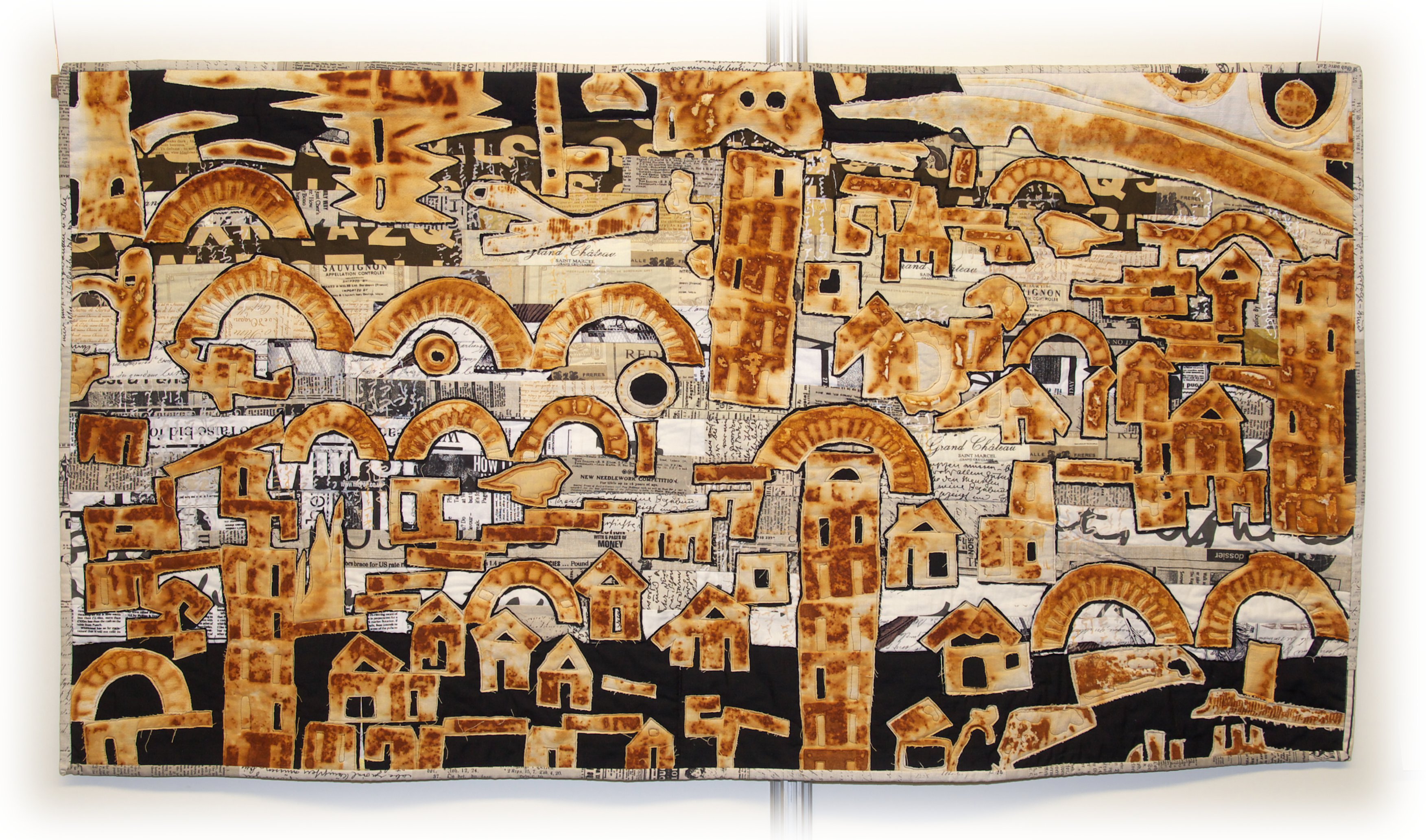 Ricordo che già da lontano, ancora prima di leggere il titolo, appreciating the chaotic composition of arches and various buildings, immaginai di stare osservando la città lagunare. Complimenti Jana, obbiettivo centrato in pieno.
Ricordo che già da lontano, ancora prima di leggere il titolo, appreciating the chaotic composition of arches and various buildings, immaginai di stare osservando la città lagunare. Complimenti Jana, obbiettivo centrato in pieno.
Mirka Kalinová ha trovato da qualche parte della Boemia questo scorcio caratteristico da riportare su stoffa.
“Under the Arch“
Se il precedente lavoro raffigura un angolo fatto di pietra e storia, con questa fettina di paesaggio autunnale Mirka Kalinová suggerisce il suo sentimento contrastante verso un ambiente naturale familiare ma non sempre idilliaco.
“Waiting for Snow“
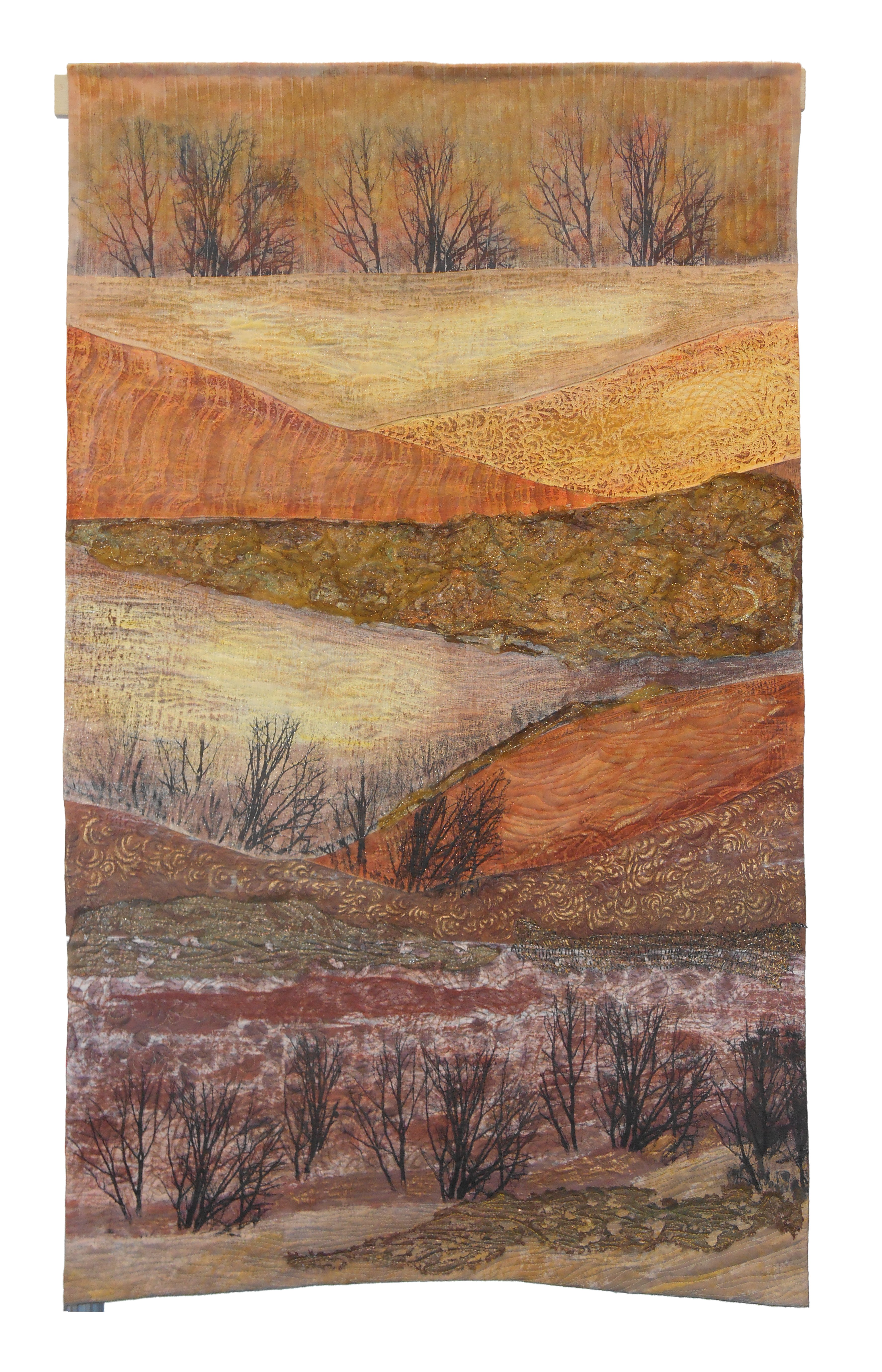 Da una visione naturale a una visione virtuale.
Rata Sum è la capitale degli Asura. Quando il Grande distruttore, 250 anni fa, li costrinse ad abbandonare le loro case dalle profondità di Tyria, essi si stabilirono nelle rovine di una precedente civiltà, building geomystic generators of power within these already fortified confines and founded their new capital in that. The aesthetics of the ruins reflect the modern architecture of the Asuras. Rata Sum is now a geometrical masterpiece, a testament to the relentless progress. (Guild Wars Italia)
Calma, calma, it is not about computing aphasia, nor you did wrong blog.
Da una visione naturale a una visione virtuale.
Rata Sum è la capitale degli Asura. Quando il Grande distruttore, 250 anni fa, li costrinse ad abbandonare le loro case dalle profondità di Tyria, essi si stabilirono nelle rovine di una precedente civiltà, building geomystic generators of power within these already fortified confines and founded their new capital in that. The aesthetics of the ruins reflect the modern architecture of the Asuras. Rata Sum is now a geometrical masterpiece, a testament to the relentless progress. (Guild Wars Italia)
Calma, calma, it is not about computing aphasia, nor you did wrong blog.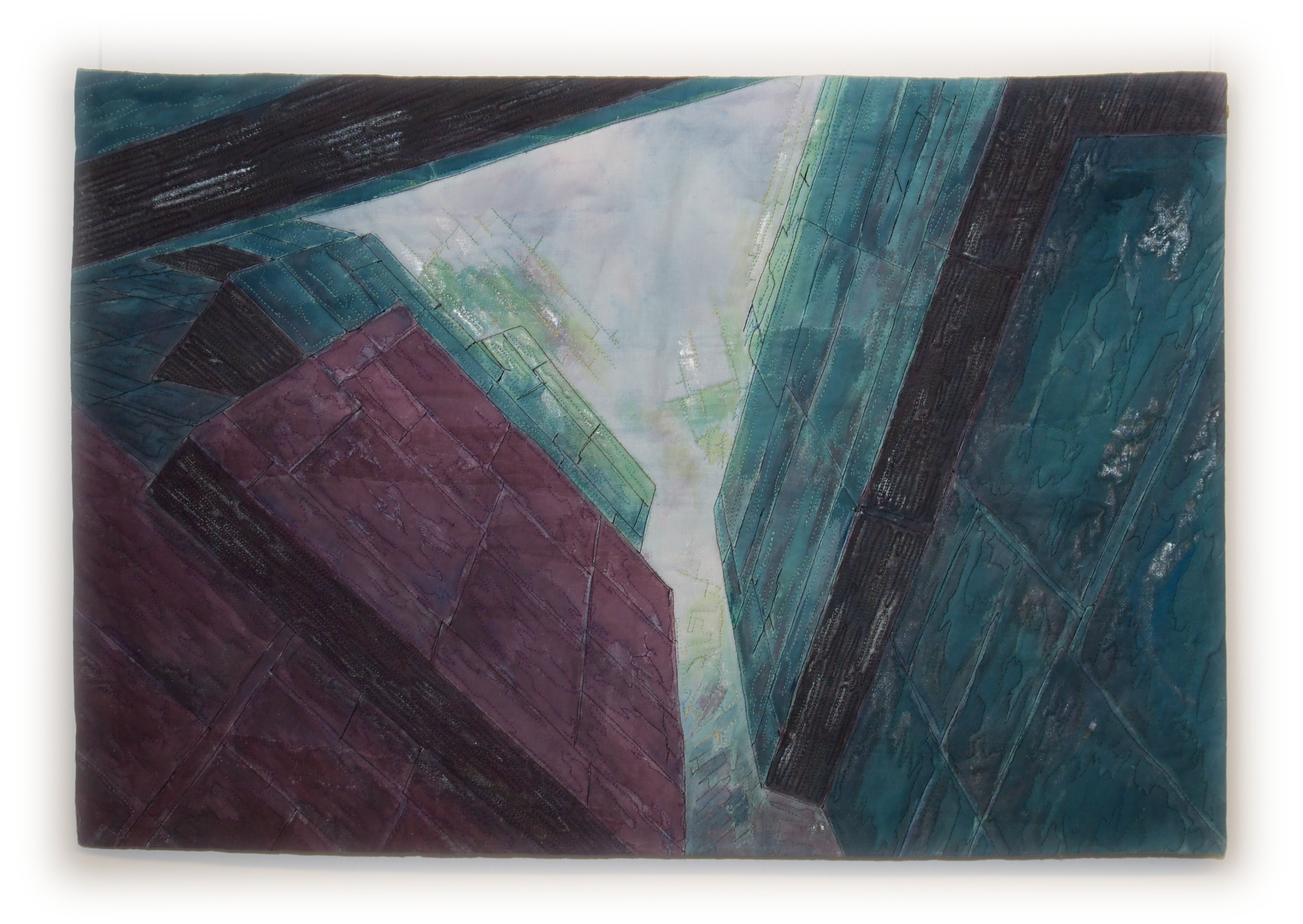 Romana Cerná this work entitled “In the Depths of Rata Sum” It is proof that the quilter can find inspiration everywhere, maybe even peeking their children's video games. Perciò, from now on, Foreclosures do not be in the search for new subjects.
Romana Cerná this work entitled “In the Depths of Rata Sum” It is proof that the quilter can find inspiration everywhere, maybe even peeking their children's video games. Perciò, from now on, Foreclosures do not be in the search for new subjects.
From the geometric geomistico.
Molta geometria per questo “reckless” work titled Nava Young “Circle of Life“. What is certain is that life has this explosion of colors!
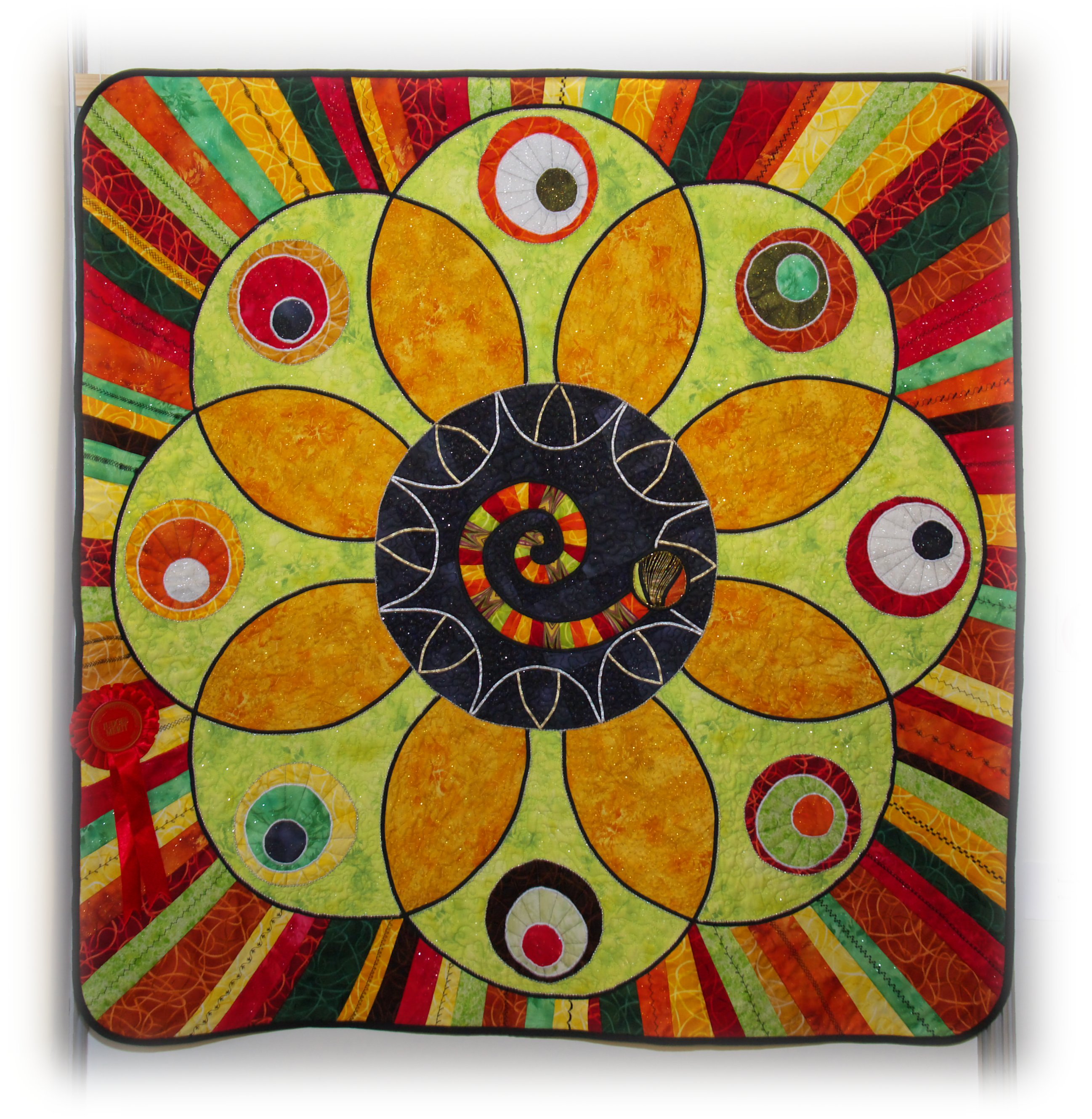
Just to get back to the mystery. Quest'opera di Linda Buriánová, “Paradise of Cats“, with a bit of drawings’ 60's, It reminds me that cats are often the subject of small works of more or less refined art in Prague, but cats in flesh and hair did not even see the shadow. Mah…
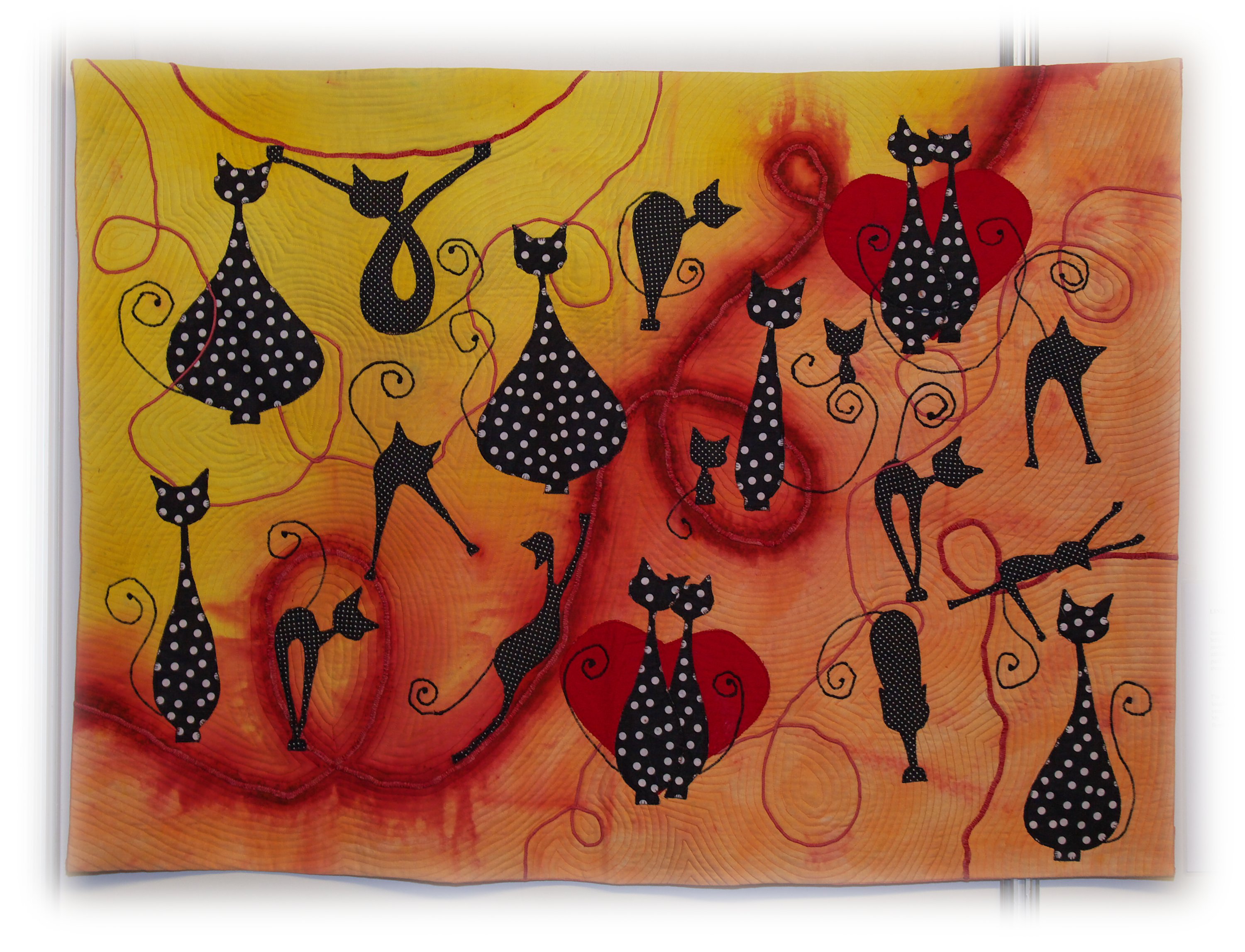
3 only colors for Věra Skočková, blu, red and white, Czechs colors. Although the themes are inspired by the popular culture of this land, hoping not to make lose the memory.
Unique style and subjects, these works have traveled the world, gracious ambassadors of the Czech tradition.
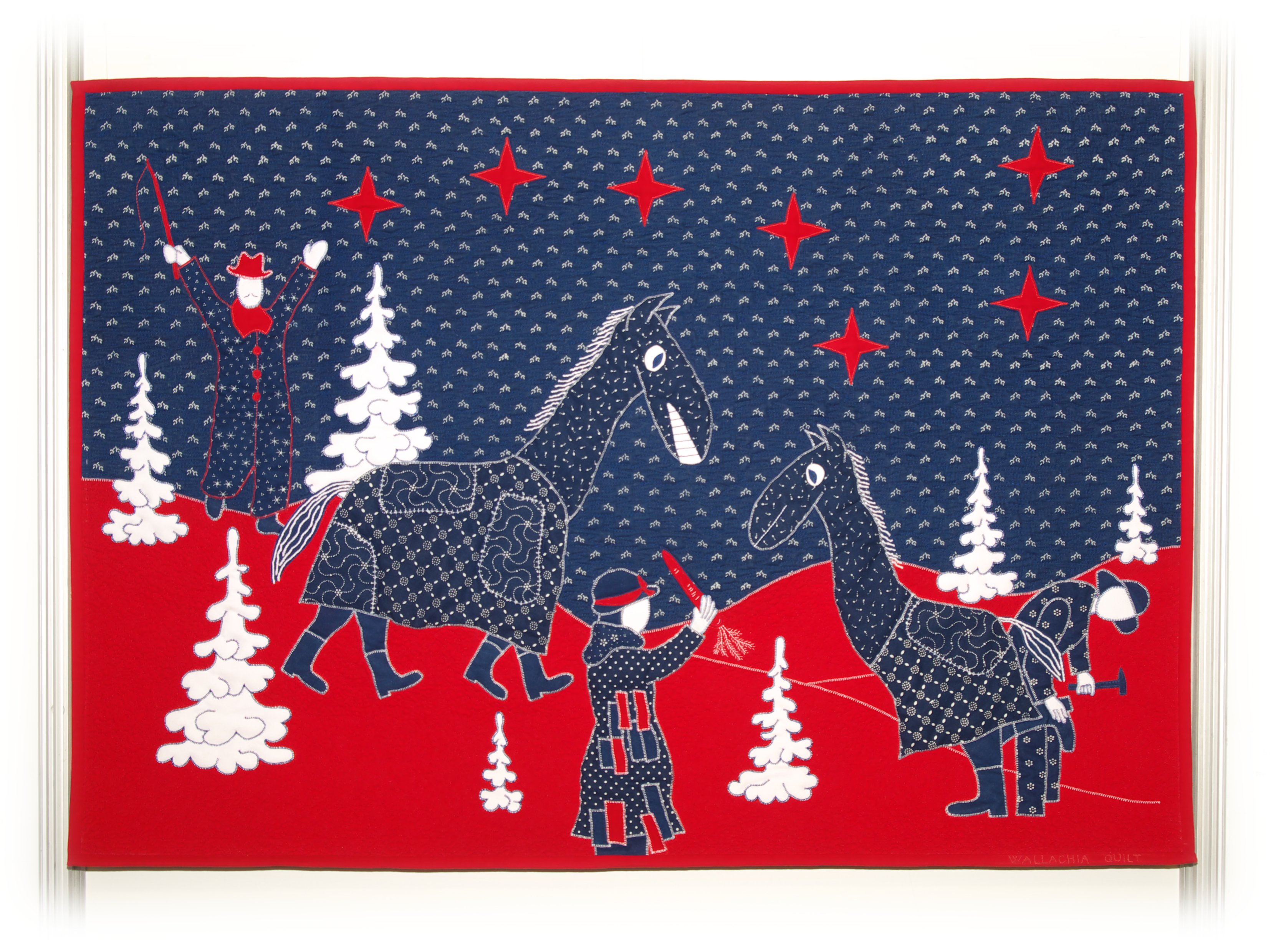
Romania, Catherine Marghidan ha portato “House Pillar“. Quel to the’ English I know, It should indicate a mainstay of the house. For some reason it reminds me of an old woman's dress.
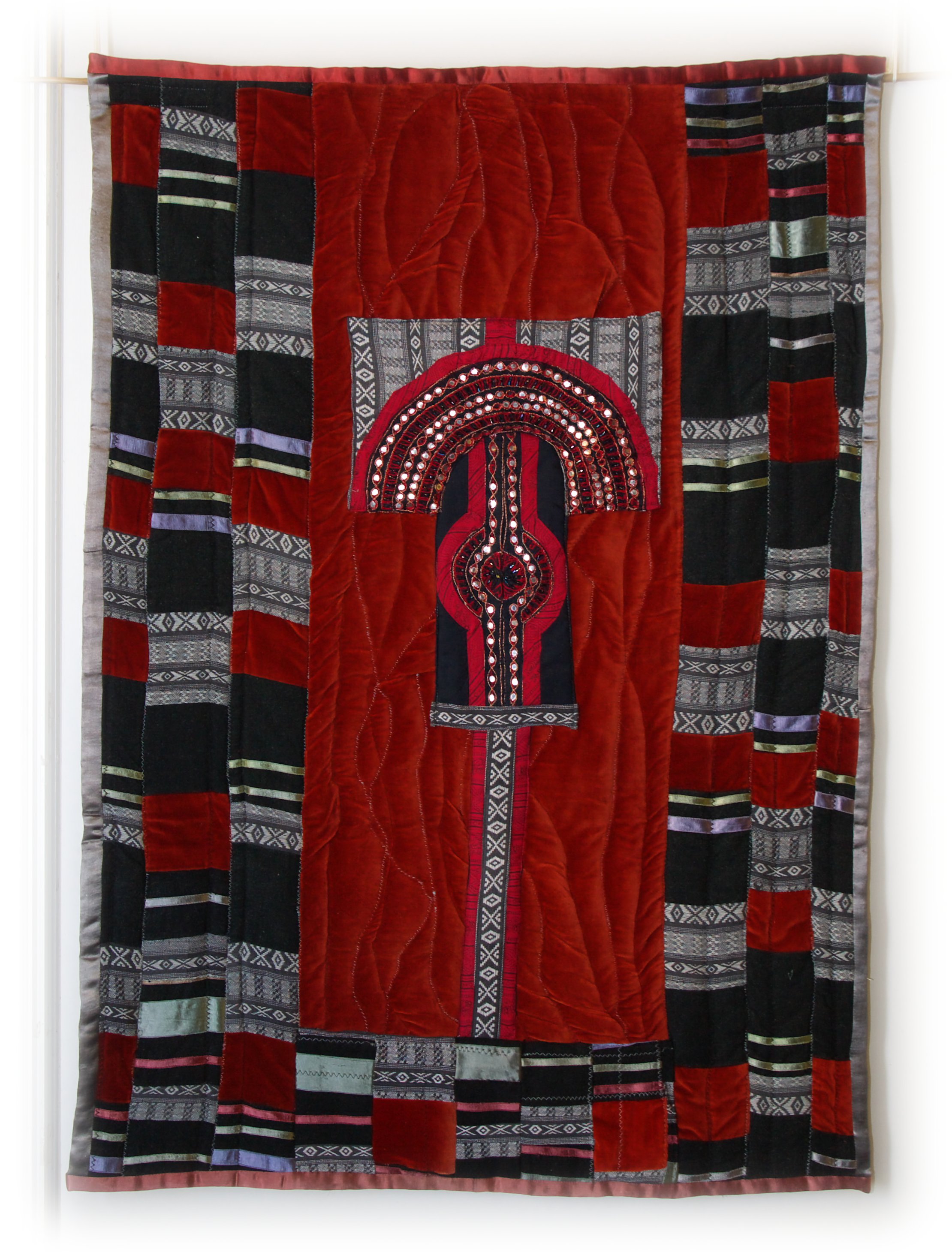
Jana Štěrbová always likes to evoke rather than representing, without advancing in the maze of abstraction. The theme of his work to get there by suggestion rather than understanding, and that the closer to the art.
“Cross”
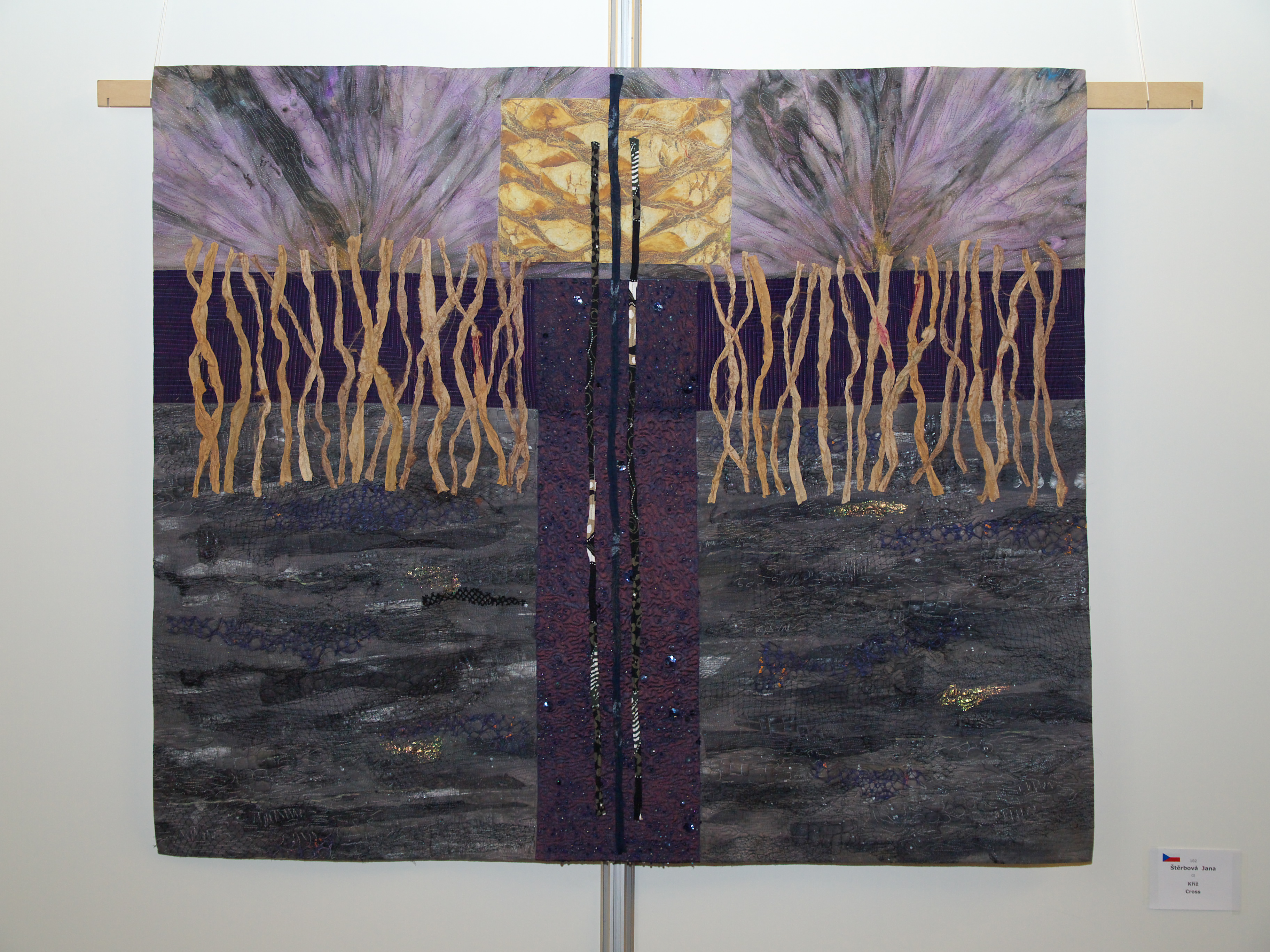
new themes, nuovi materiali, new compositions, Nuovi materiali per Helena Fikejzová. Each time you should change, get out of common sense and logic, you need a change of plan.
“Change of plan”
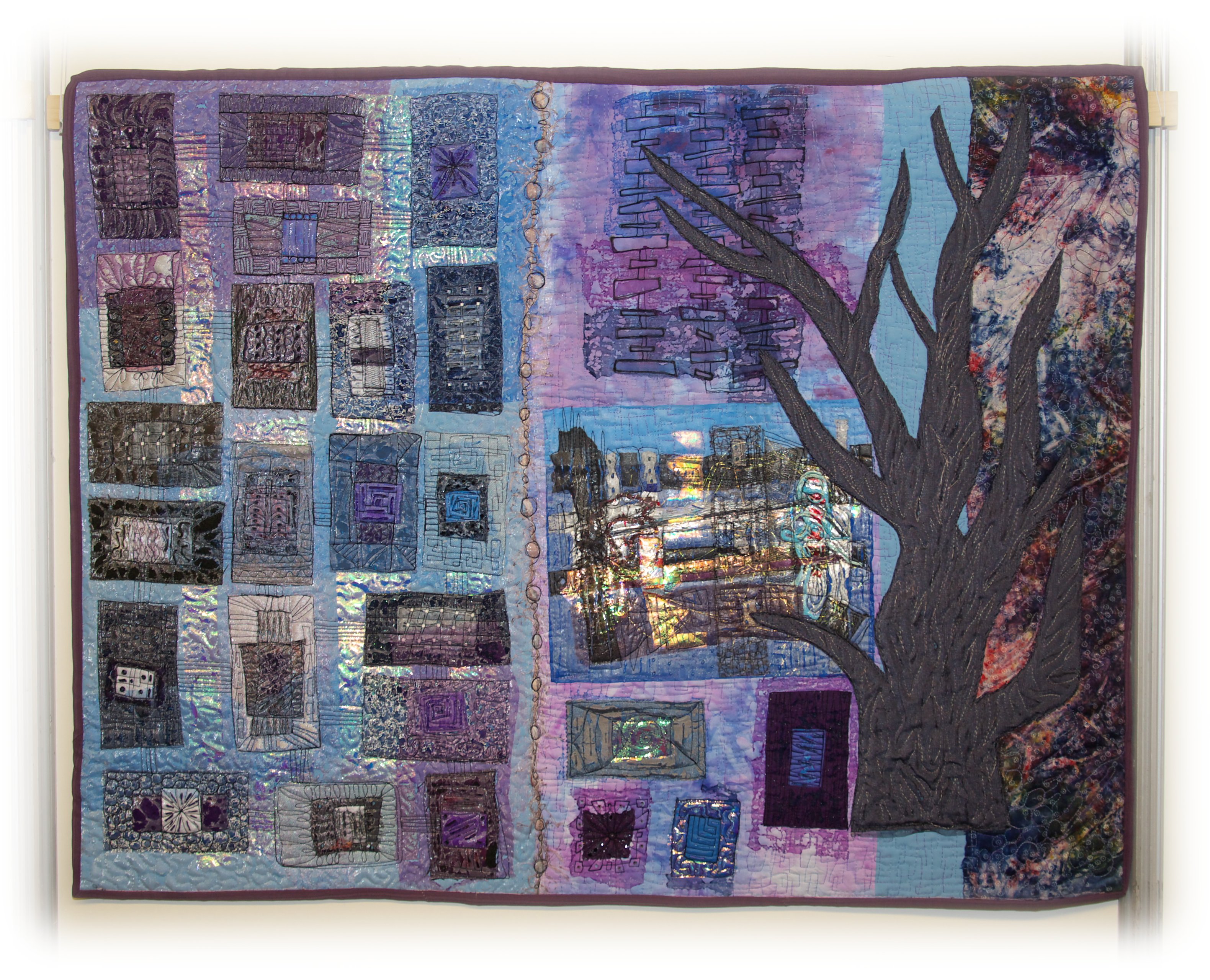
Denmark's pretty North, and I suppose that the climate is not particularly pleasant. Maybe it will be for this reason that Dorte Gjelstrup tries to display the warmth through the color, hoping that heats at least the spirit.
“Hot City”
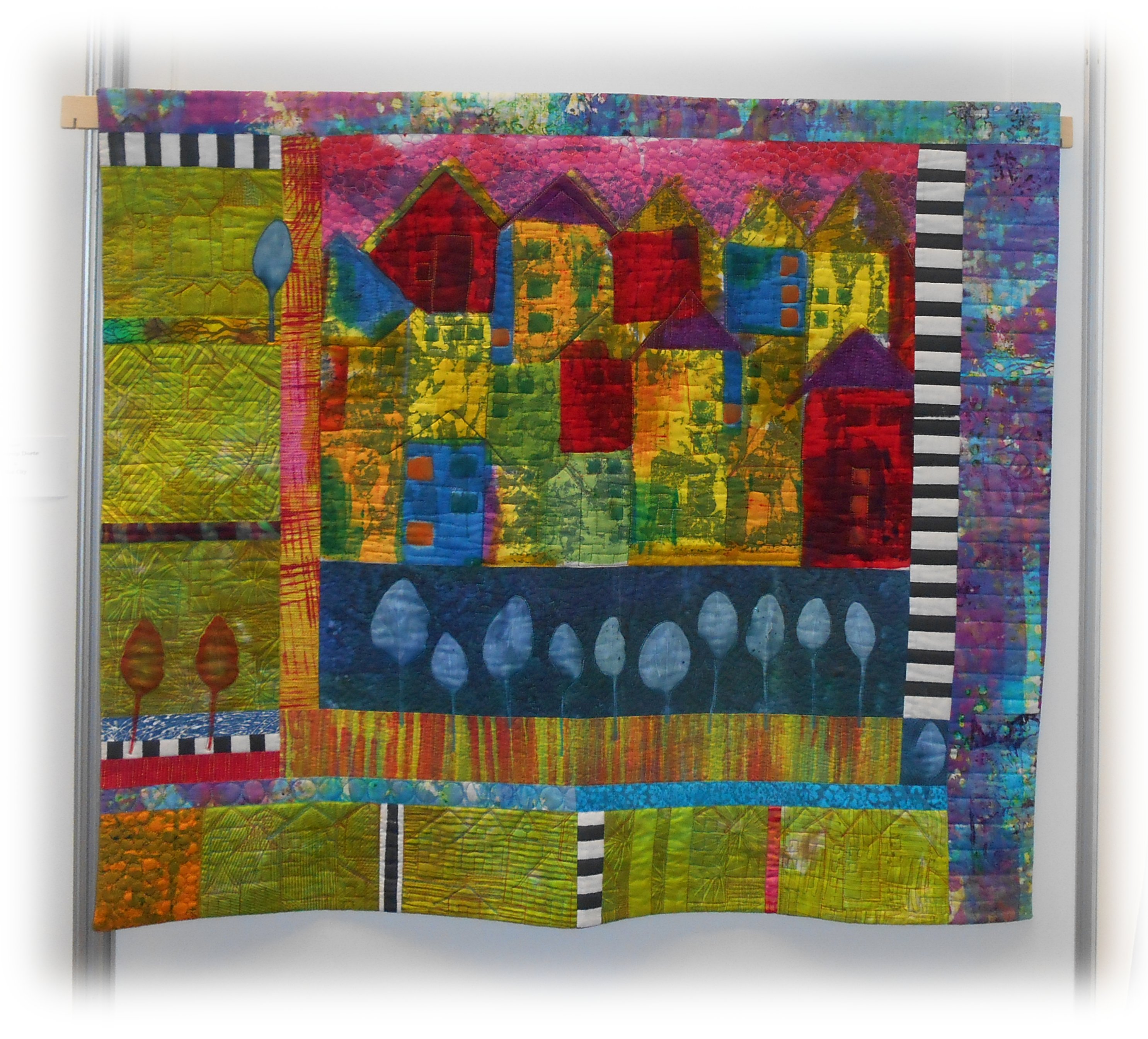
6000 3cm x 3cm squares as it took the association Danish Freja Quilterne to achieve this tree of life “Yggdrasil” which refers to the Nordic mythology.
The tree canopy, an ash tree, It is always green and there live four deer: Dain, Dwalin, Dunør e Duratro. INo top is a giant in the shape of an eagle, Ræsvæl, that flapping generates winds and causes storms. The tree has three roots. One goes to Asgar, the home of the gods, una va a Jotunheimen, Home of the Giants, while the last one descends into the underworld of Hel, and from this arise all the rivers of the world. on the top of the tree is a golden rooster announce Ragnarok, that is the end and the rebirth of the world (a new Yggdrasil).
Already there were, le quilter Jutland also reported annotations with ancient runes.
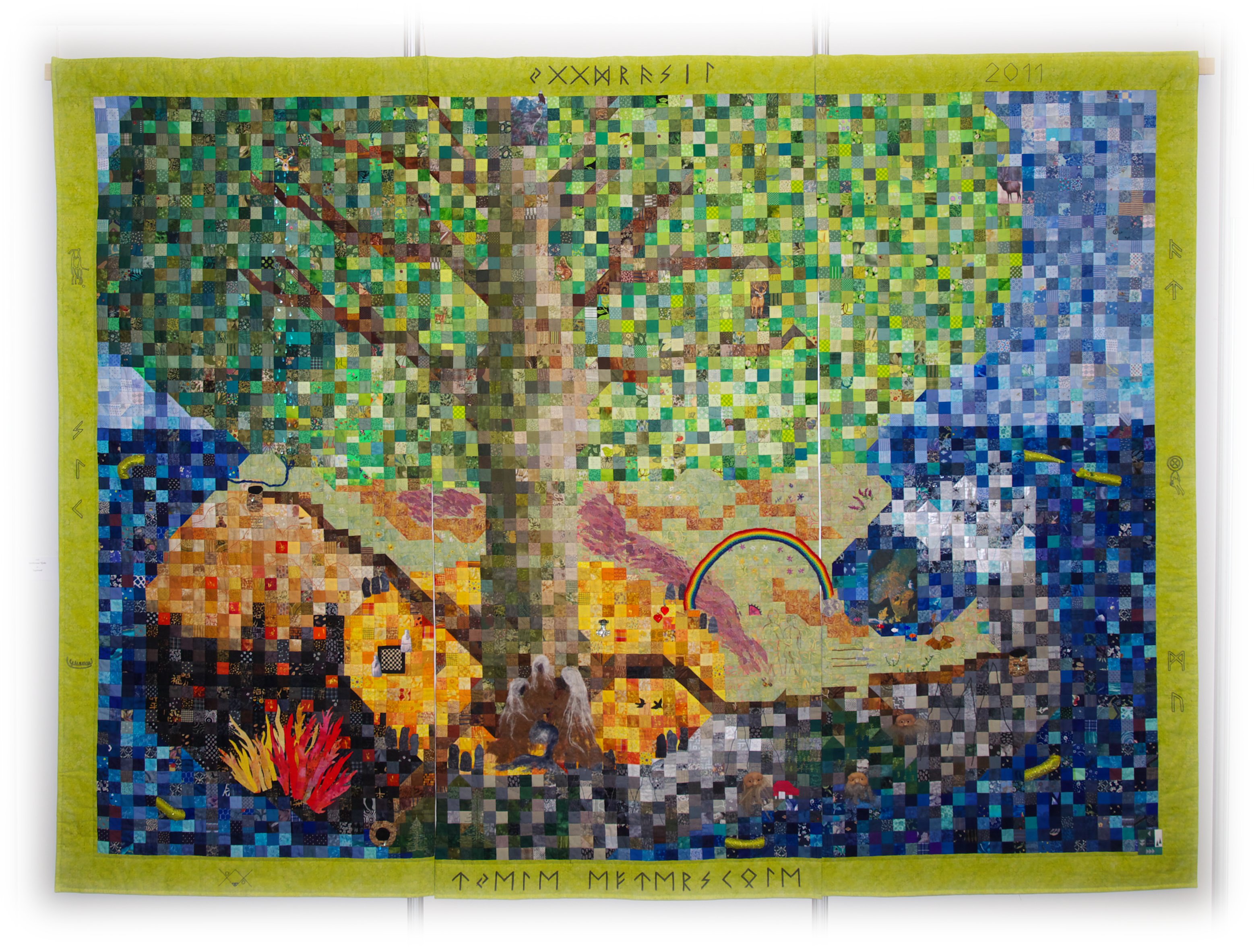
From a mythological tree in a terrestrial tree, but no less steeped in fantasy. We say it is a tree that we could meet in a dream, un bel sogno imbastito da Pavlina Strašilová.
“Tree of Flowers”
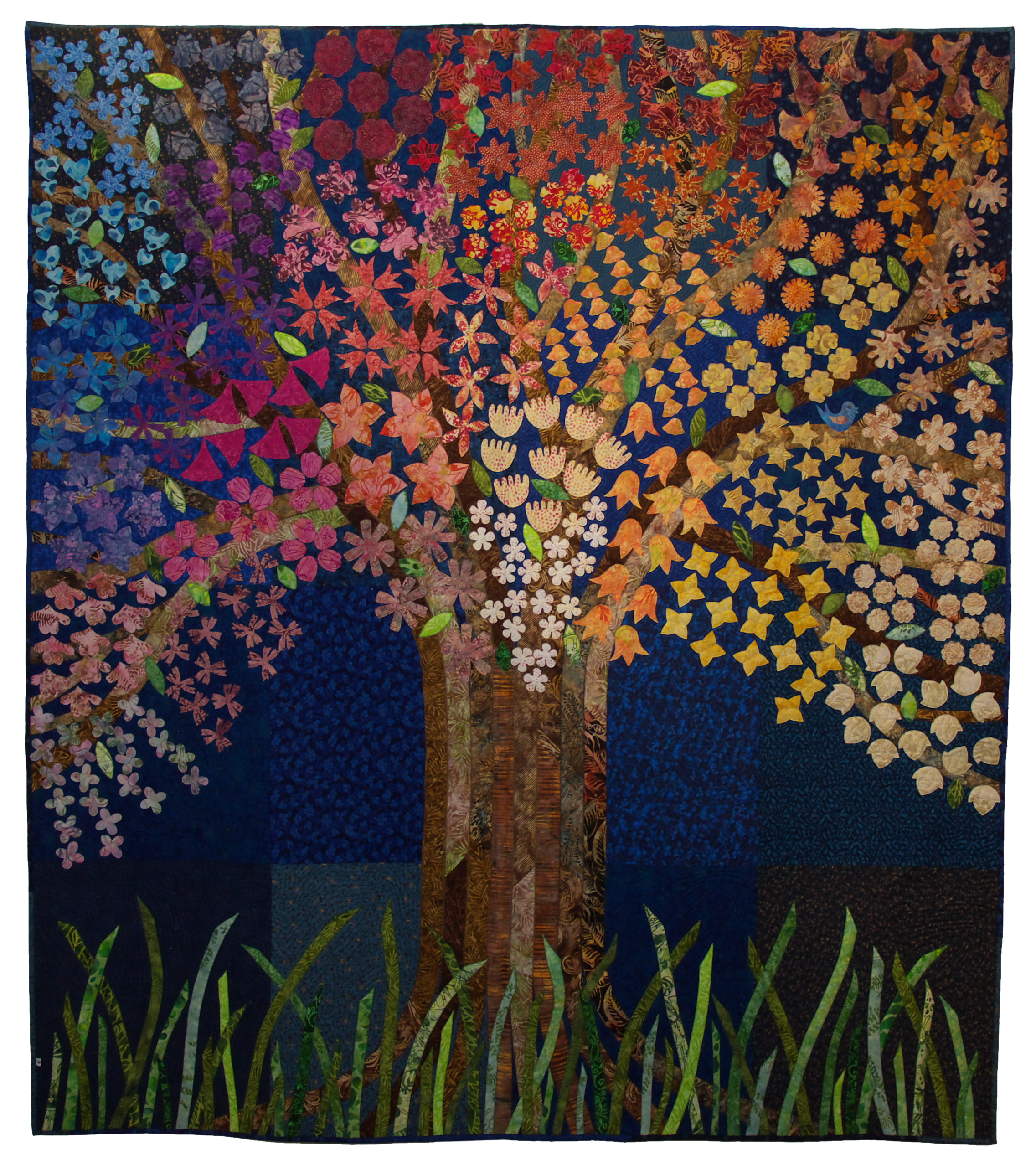
from the trees, mythological or oneiric, the representation of nature as a transcendent figure is a short step. Ma quest’opera di Jindriška Katzerová, entitled, precisely, “Mother Nature“, It allows me to open a global discourse on patchwork in Bohemia and Moravia, a reflection that goes beyond this my illustration forcibly partial.
Not bad abbiatevene, but only people like me who has followed the various editions of the Prague Patchwork Meeting may determine what can be objectively versatile Czech quilter. If you have some’ of patience you might take a look at the posts dedicated to previous editions, and you would notice, not the absence of a personal style, but the lightness in the expression of different styles.
Too many times I happened to notice how some famous quilter They insist around the same theme, a theme of successful course, a kind of distinctive imprint, but it ends up becoming cloying, self.
If in the early editions of the Prague Patchwork Meeting could exist some uncertainty, un'andamento wavering between traditional patterns and more modern ones, Today it can be established that the quilter Czech affirmed their independence from major schools placed on both sides of the Atlantic ocean beyond.
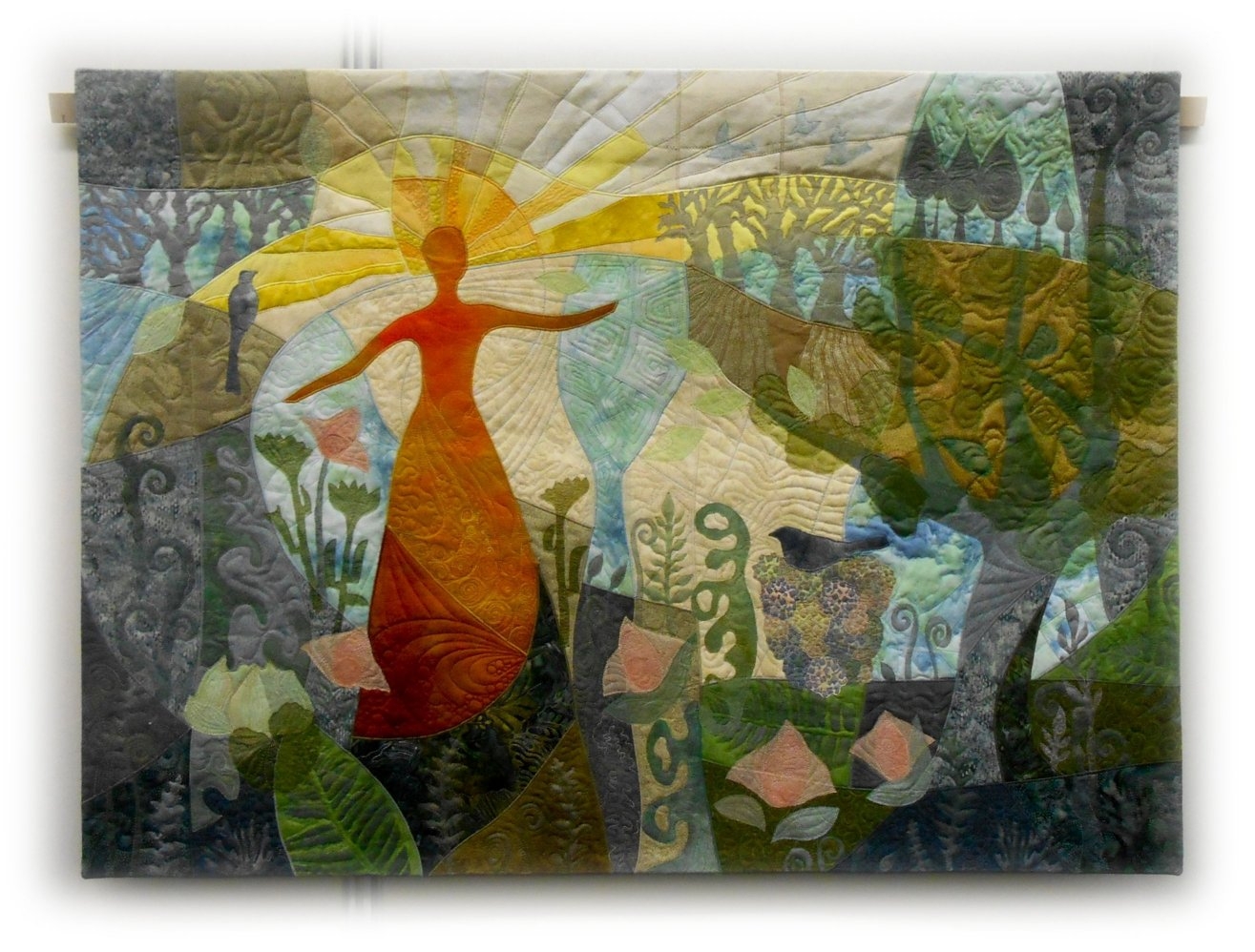 Jaroslava Grycová realized this impressionist painting by being inspired by the nature of his land, Moravia.
Jaroslava Grycová realized this impressionist painting by being inspired by the nature of his land, Moravia.
When we are talking about Impressionism, in one way or another always turns up Monet. Among the various subjects he nurtured a special interest in the bridges, perhaps because he felt himself to be a bridge between two centuries and between two expressive worlds. some names: Waterloo Bridge, to Dolceacqua, the Argenteuil Bridge, and the Japanese bridge.
The latter, a construction appreciated by Monet for the lightness of the structure, a painting admired by us for the lightness of tone and a feeling of tranquility that emanates, It has been a source of inspiration for Jana Haklová, multifaceted and inexhaustible quilter Czech.
“Visit to Monet”
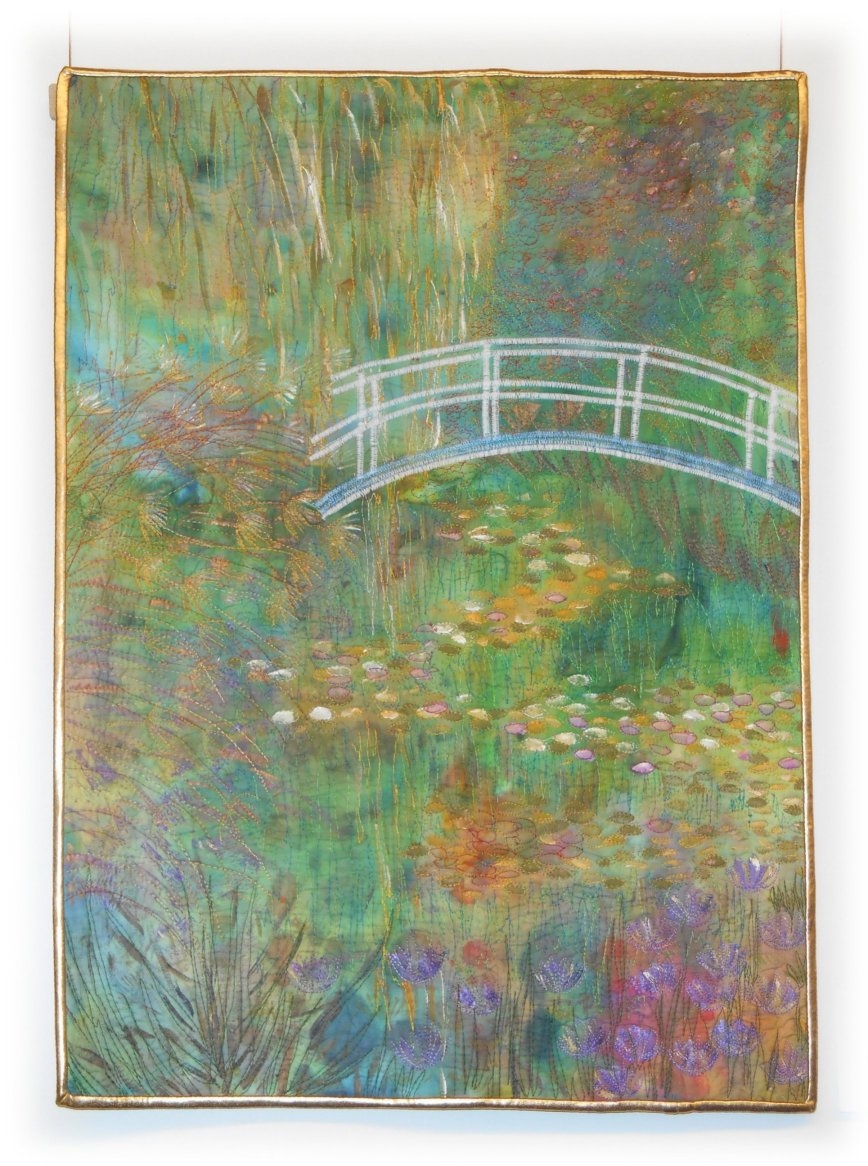
After the tree of Life Danish, here is the strange trees of the wisdom of the Czech Helena Prokopová. What is certain is that the trees are very wise because I've never heard them say a few nonsense. With everything he touches to see, the things they would have to say…
“Trees of Wisdom”
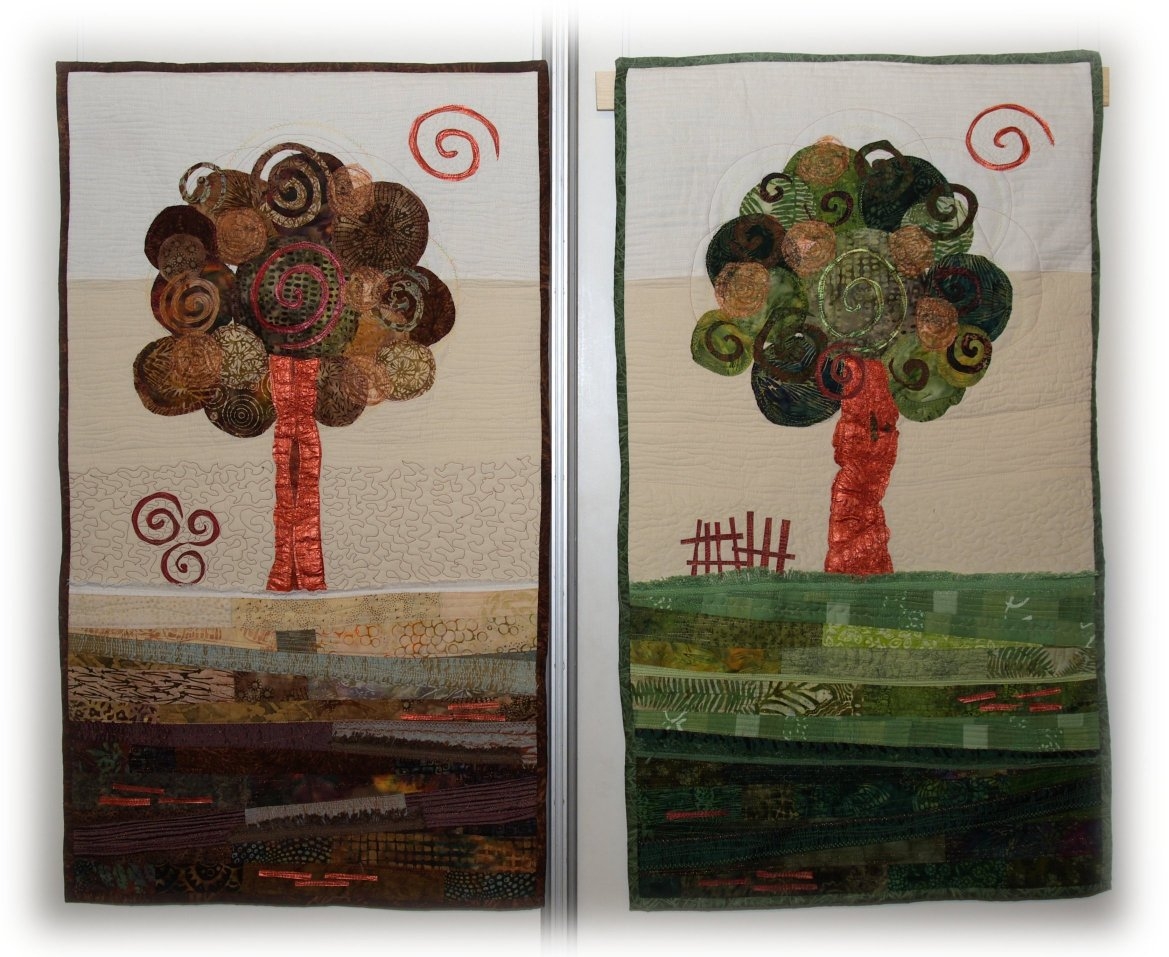
Although they have no leaves and flowers, these trees are always emerging from the sea. As for the quilt “In the Depths of Rata Sum”, Romana Černá was inspired by the video game images, undoubtedly impressive.
Saw the title, Guild Wars, at first I imagined that he was referring to the not infrequent disputes among the various associations patchwork, disagreements that in our country have a ball and be able to curb any good intention, like that, per esempio, to organize a beautiful national exhibition instead of a myriad of small local exhibitions.
“Guild Wars”
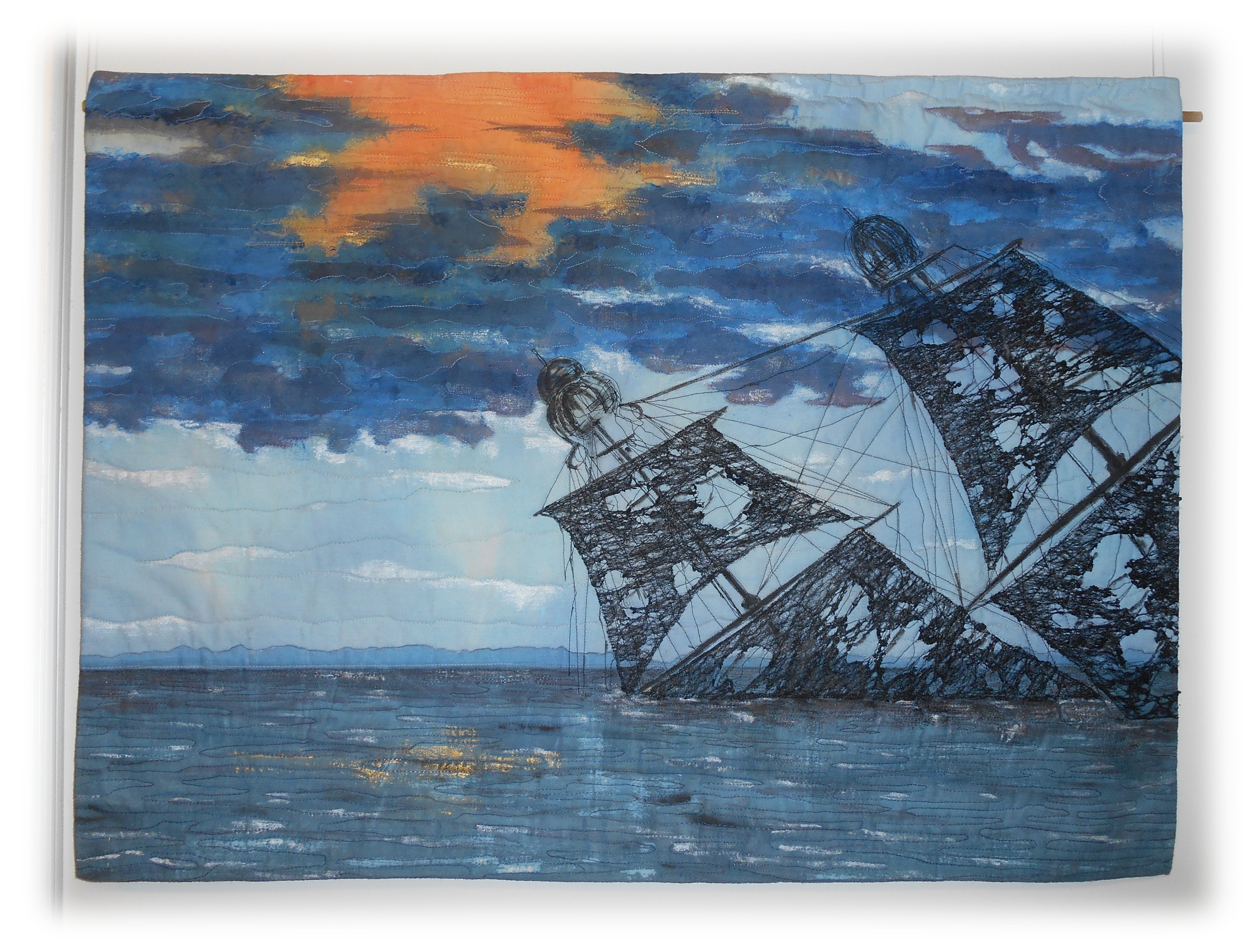
Dal computer back to nature, for this beautiful flower arrangement with Jana Lalova. no presumption, no flight of fancy, zero special effects, only good taste and good sense of color, e scusate se è poco.
“Garden of Paradise”
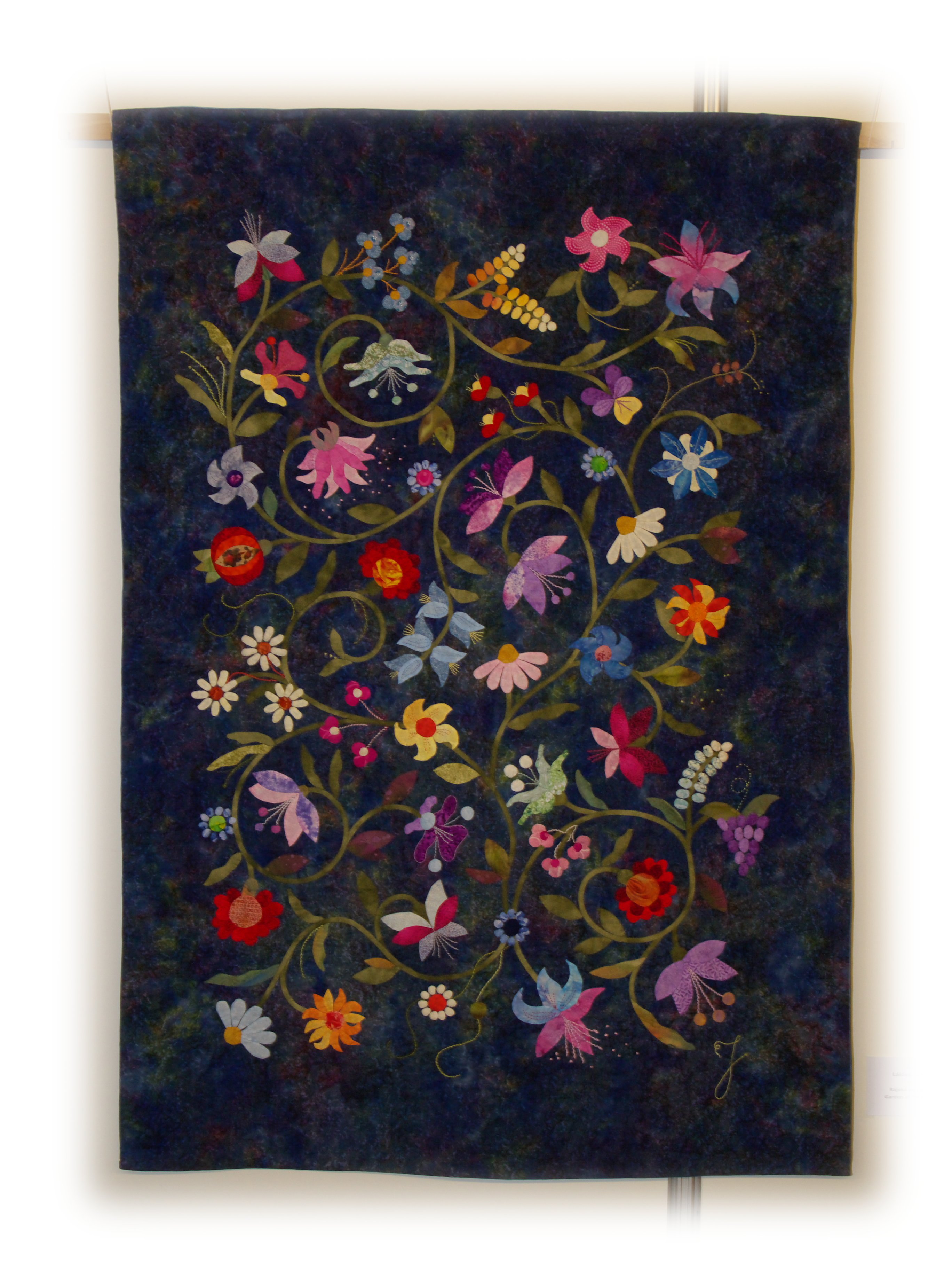
Moravian woods but no flowers this time by Jaroslava Grycová. She found this style with holes like’emmenthal. Let's see where it takes you.
“Wave of Flowers”
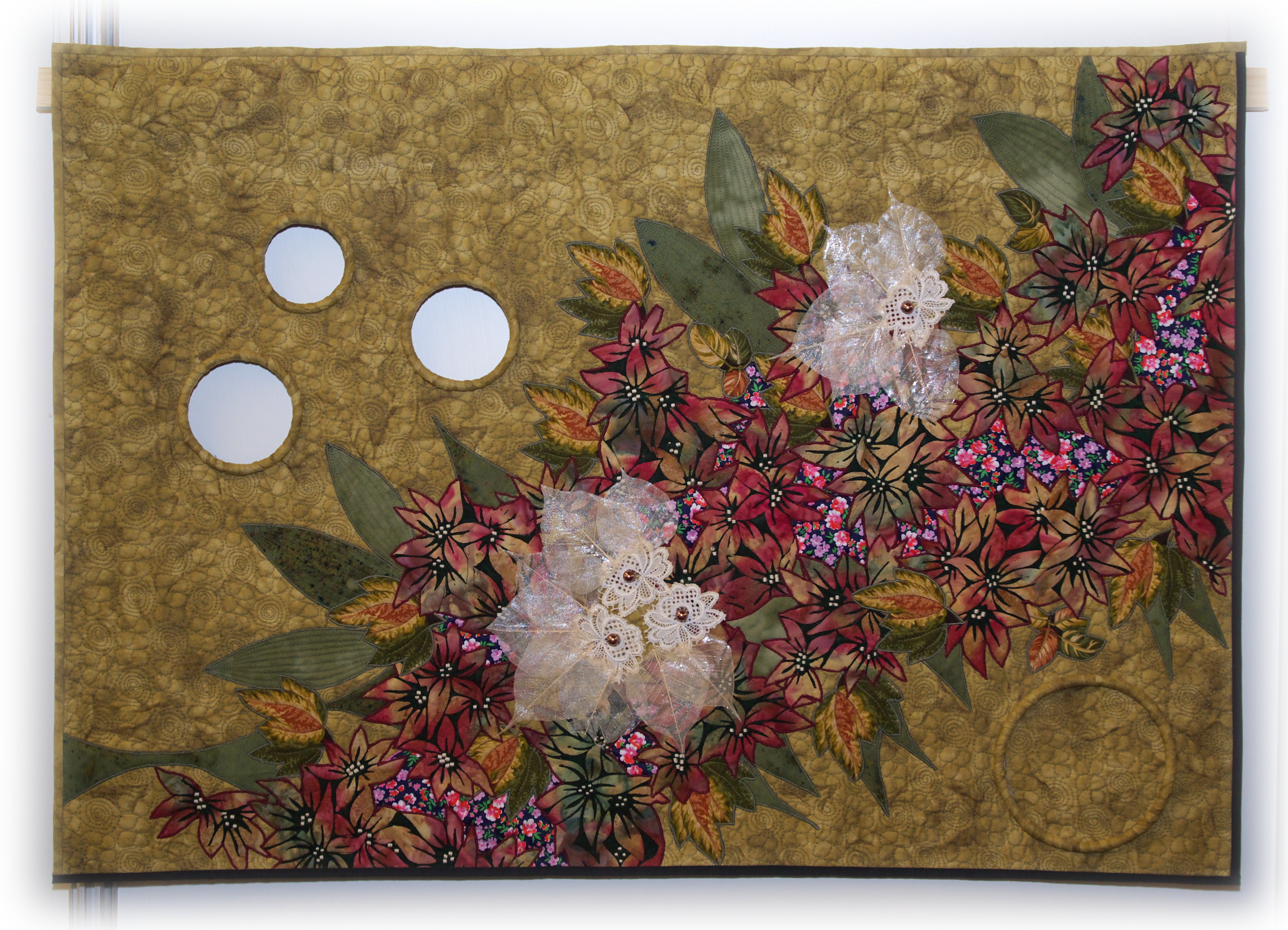
I always liked the works of Sandra Grusd. With a few simple elements can compose evocative images, talvolta per mezzo del colore, talvolta, come in questo caso, dando l’impressione della tridimensionalità. Fateci caso, non c’è il sole ma l’opera è immersa nella luce. Lo steccato, così rustico e sbilenco, quasi provvisorio, come spesso capita di vederne al mare, sembra precluderci la via a una visione più vasta, tanto che verrebbe voglia di abbatterlo e scavalcarlo per arrivare alla spiaggia. E le frasche, appena accennate, quasi impalpabili ma esistenti, formano un’ulteriore barriera tra noi e l’orizzonte, un’illusione comunque irraggiungibile. Se non è arte questa…
“Horizon”
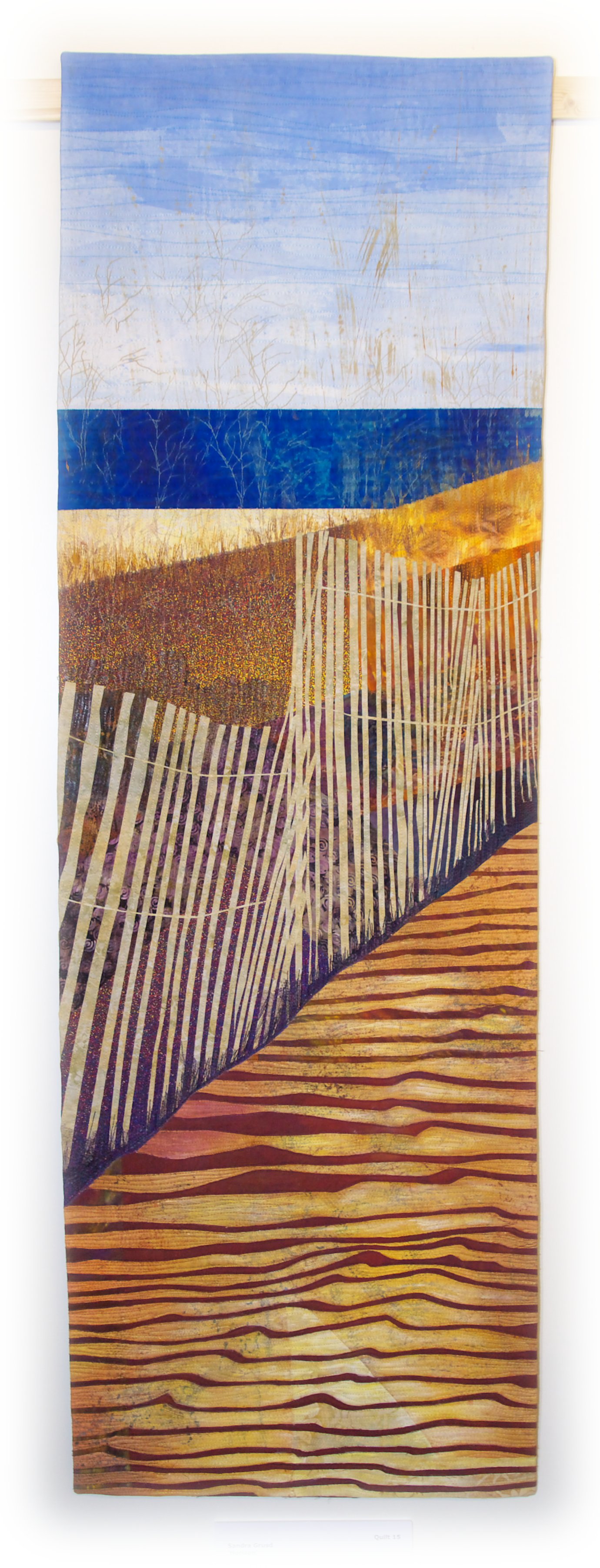
Siccome anche noi facciamo parte della natura (e troppo spesso lo scordiamo), ecco una coppia di ballerini, un’immagine assai dinamica realizzata da Lisbeth Madsen, among others with seemingly improbable fabrics but that are decisive for the success of the enterprise.
“Ballet”
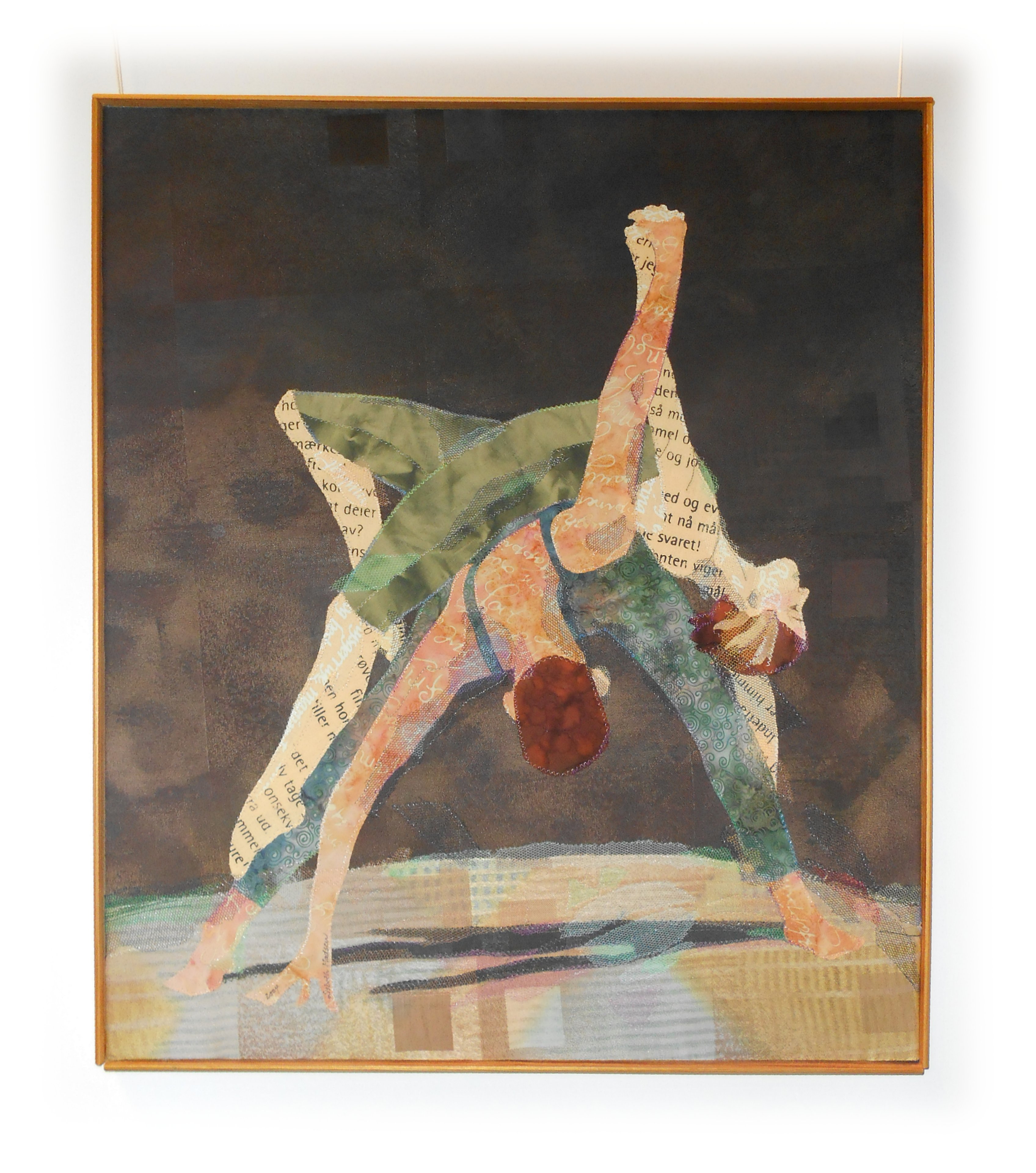
In my outlandish assumptions is that the quilter are, like all artists of the rest, un po’ out of mind, and the work that will follow comfort my opinion.
This great-looking work entitled “Orient” di Marcela Bednarova. And if the distance is already his impression…
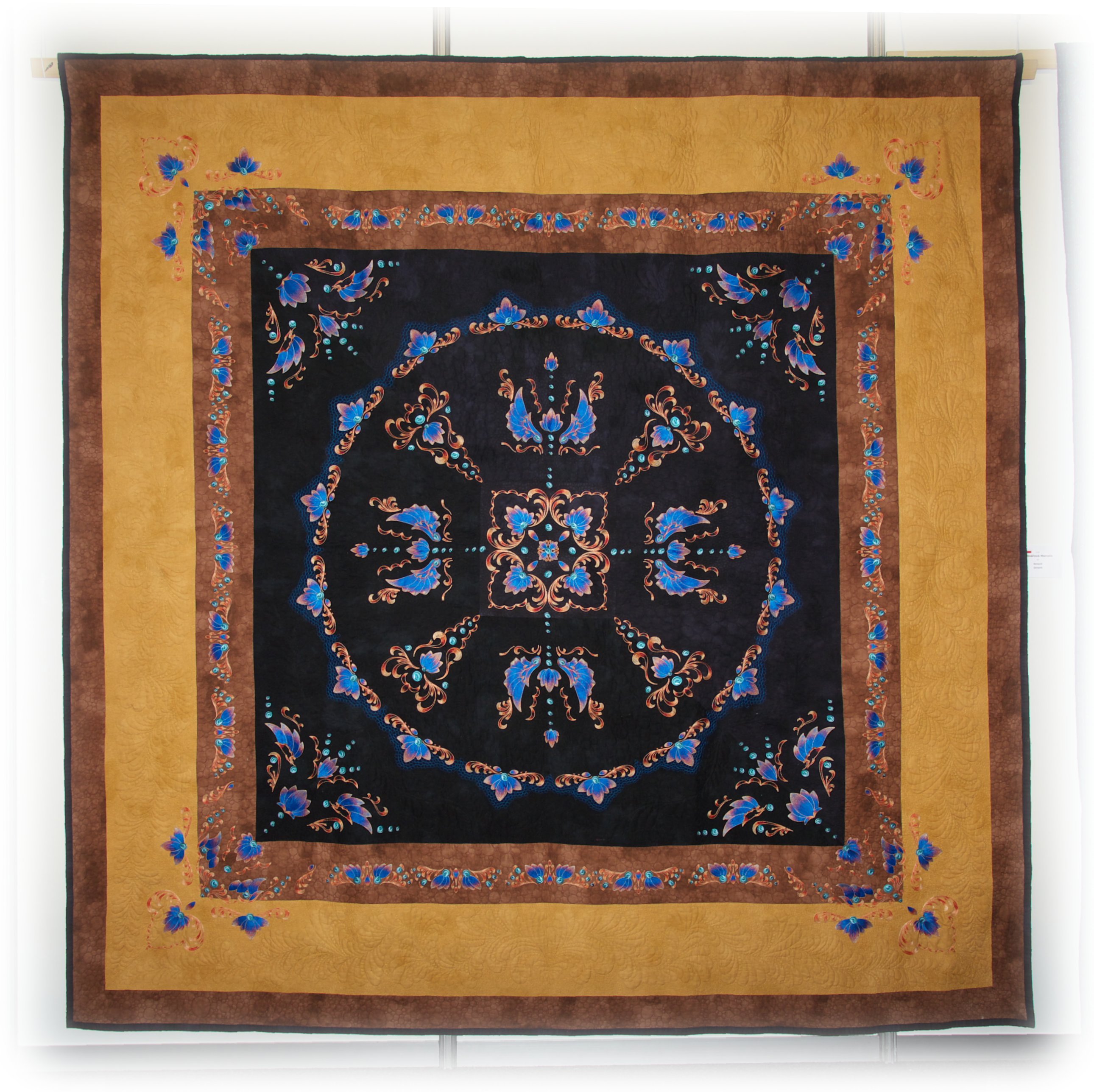 … seen up close is even worse!
… seen up close is even worse!
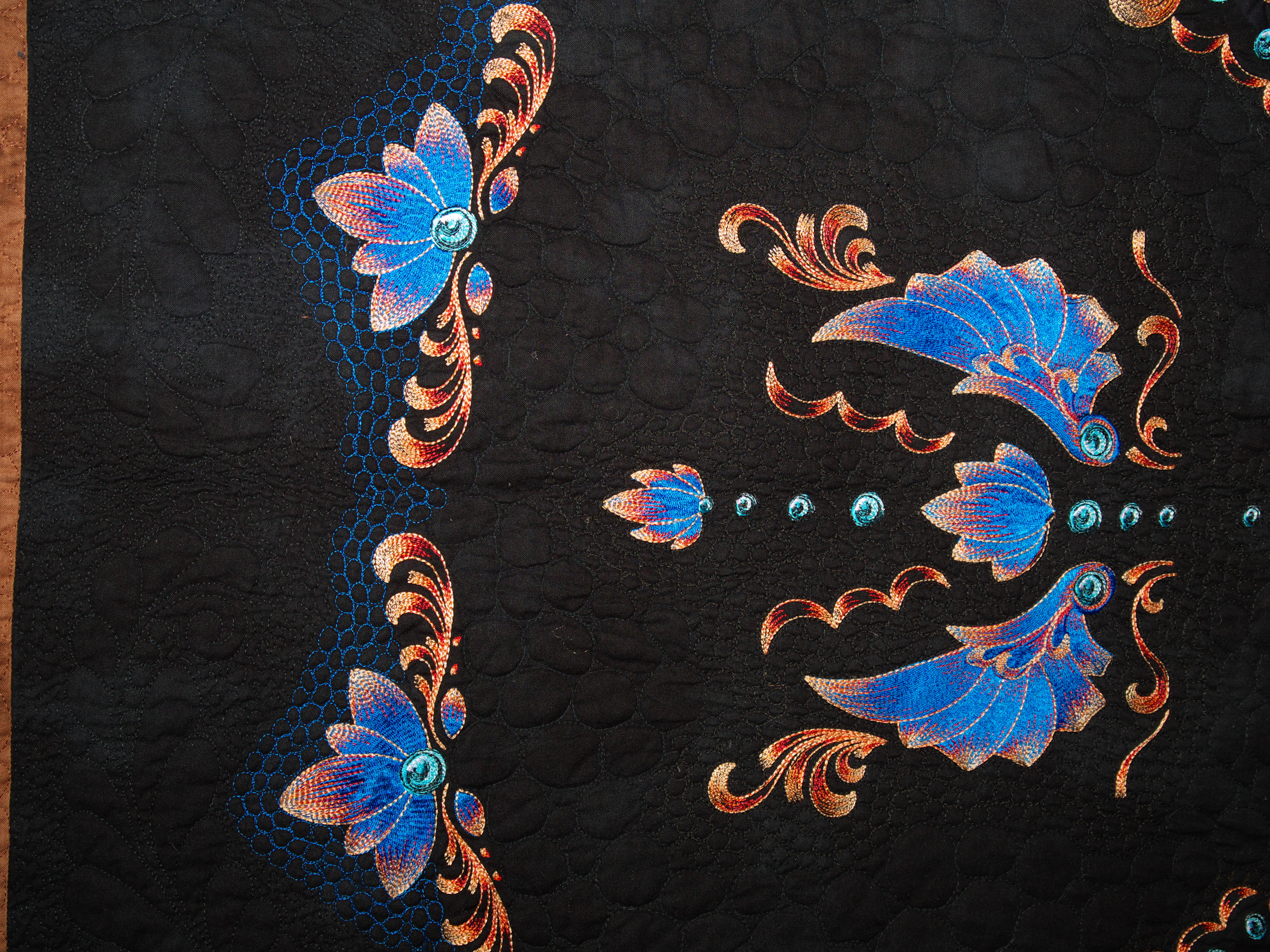
Jana Lalova reminds us that the words as “cervical”, “sciatica”, “carpal tunnel”, “arthrosis”, are terms that are learned over time, ie after the “anta”, and that torment quilter whenever she spends too much time on the chassis or the sewing machine.
Thank God that you become more and more young!
“Anatomy of the Old Age”
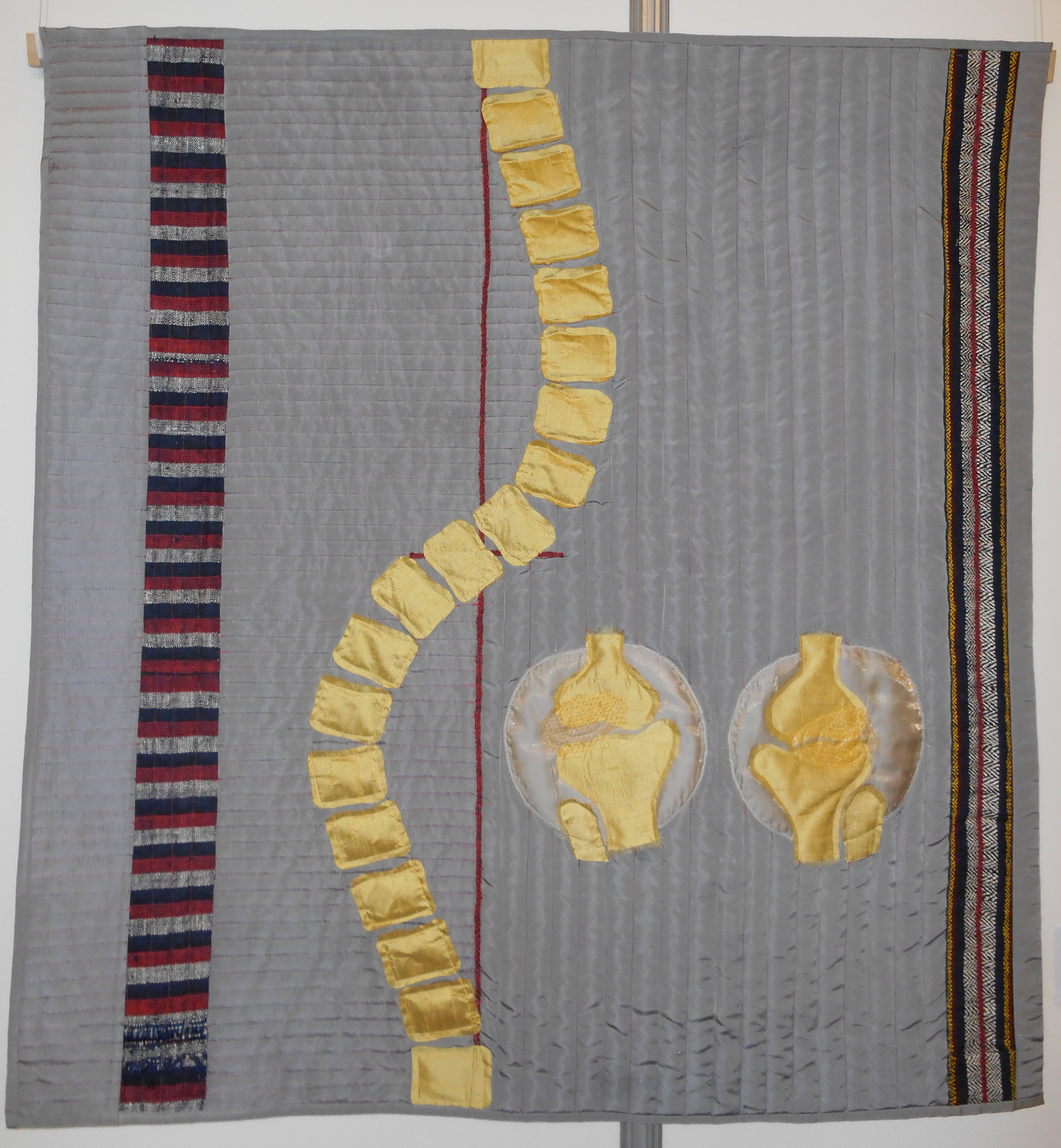
Mădălina Vieriu brought his creation entitled “Falling“. this ThuRomanian vain quilter has used the material in a very original way, increspandola, overlaying, and creating an interesting chromatic contamination.
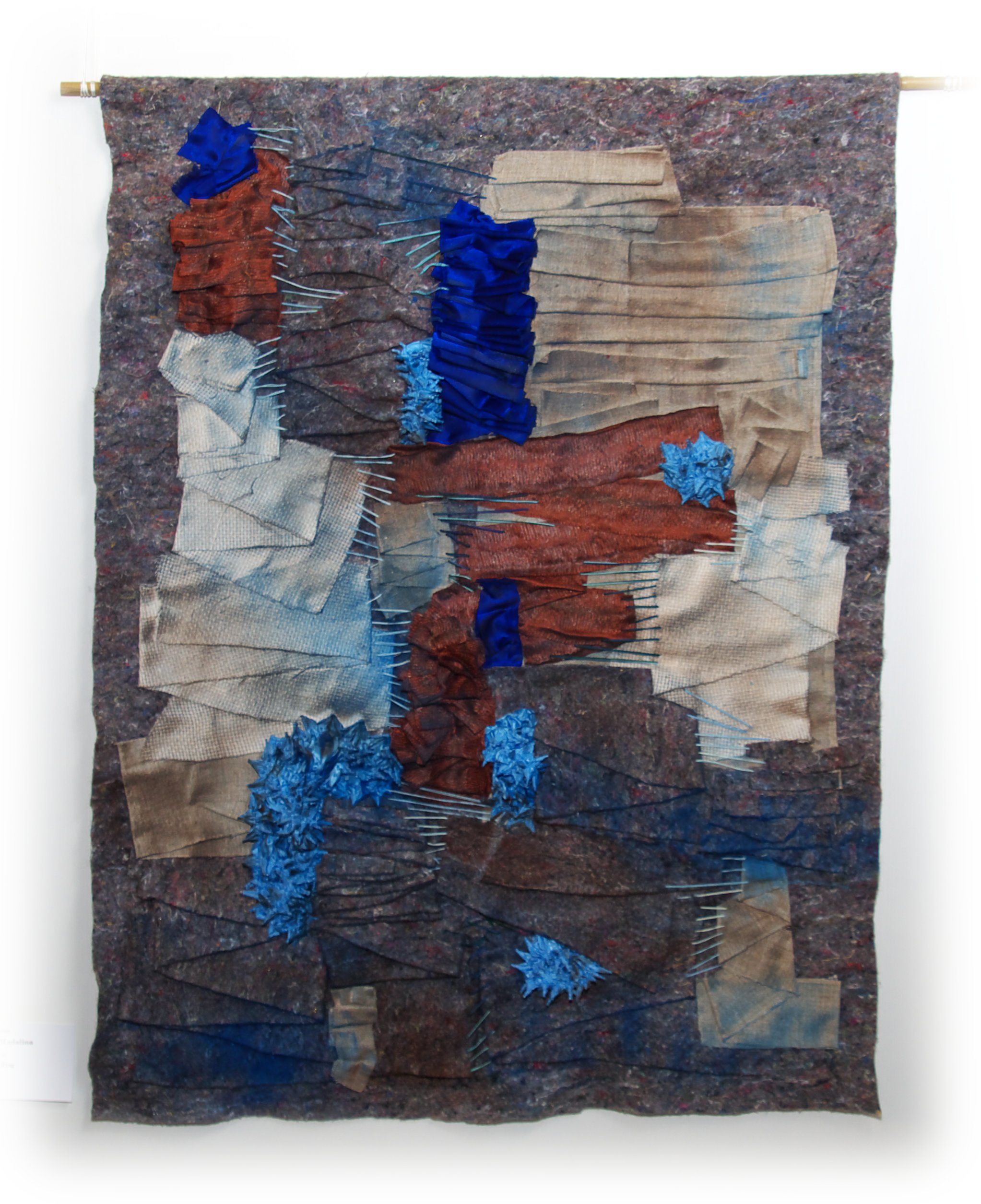
It happens to see the work done with the fabric of old ties, maybe Silk. Here it has gone beyond, Czech quilter used the entire ties, labels including, to compose this interweaving, …
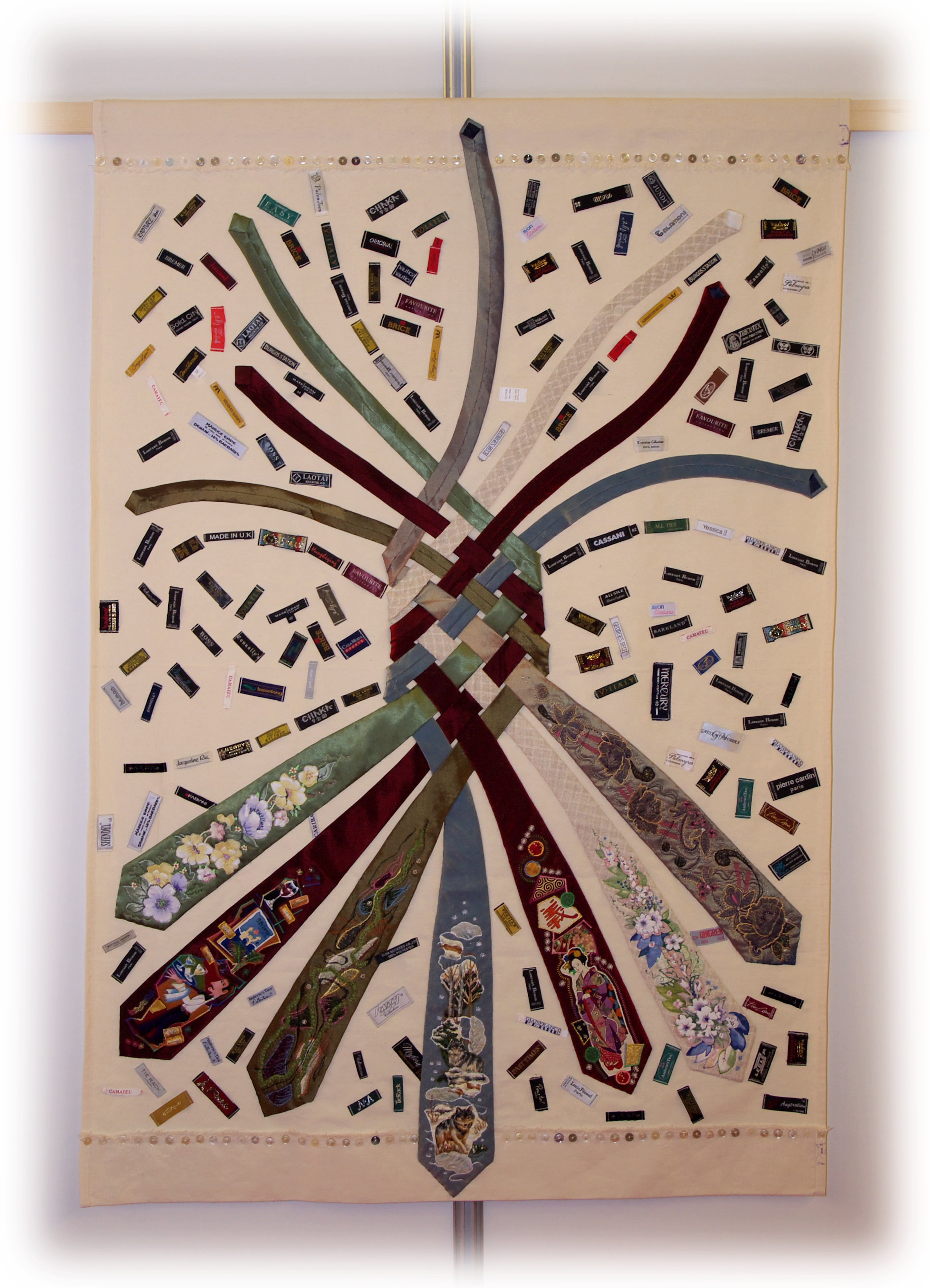
… e perché no, already there were have used them as a support or theme for the original creations.
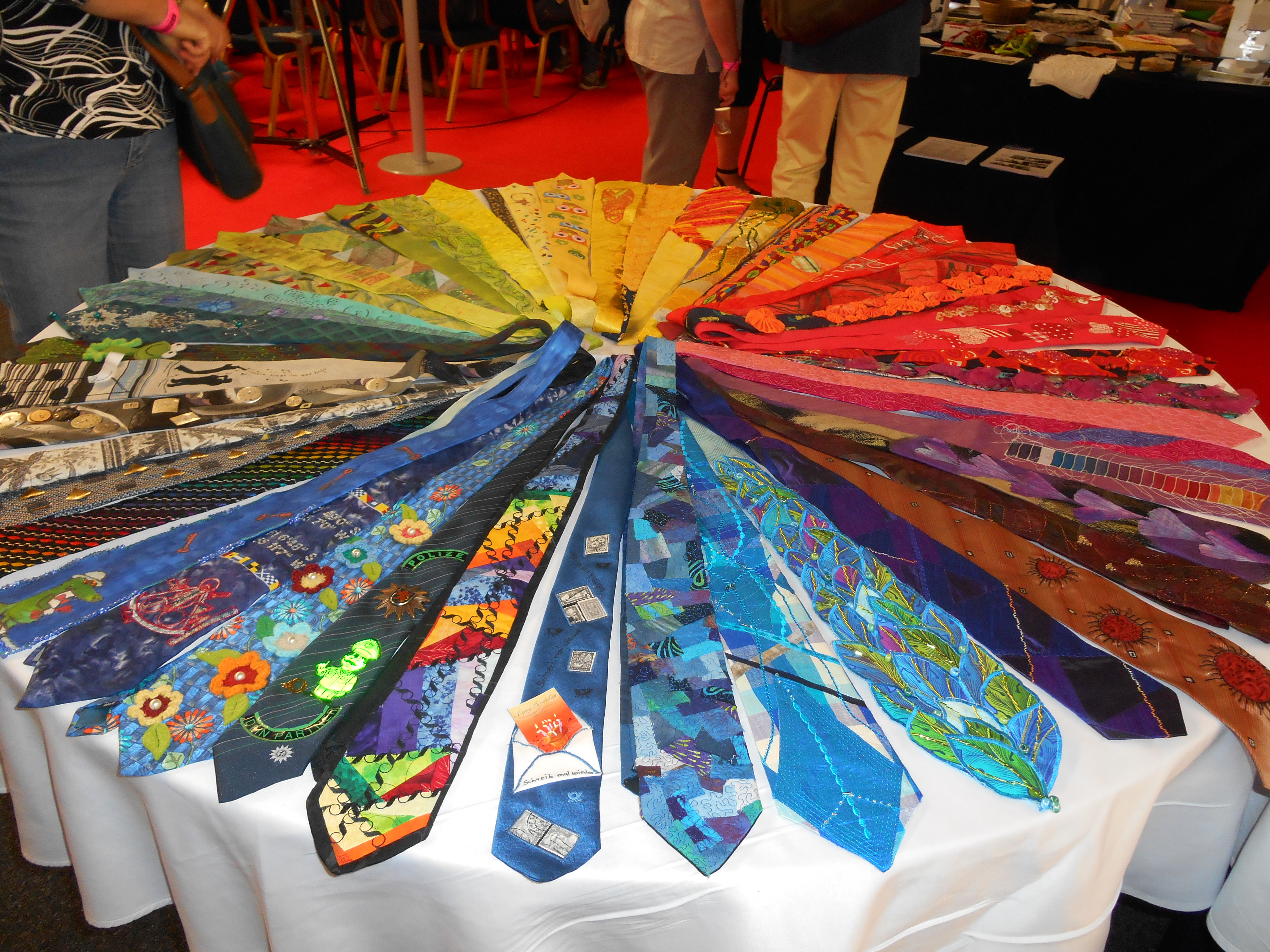
Also in the issue of the flax, Martincová Alena imagined this inextricable tangle plant, not a jungle, even a family forest, but something powerful, unstable, an ongoing process, like when you start to imagine a quilt but they have still confused.
“Primaeval Forest”
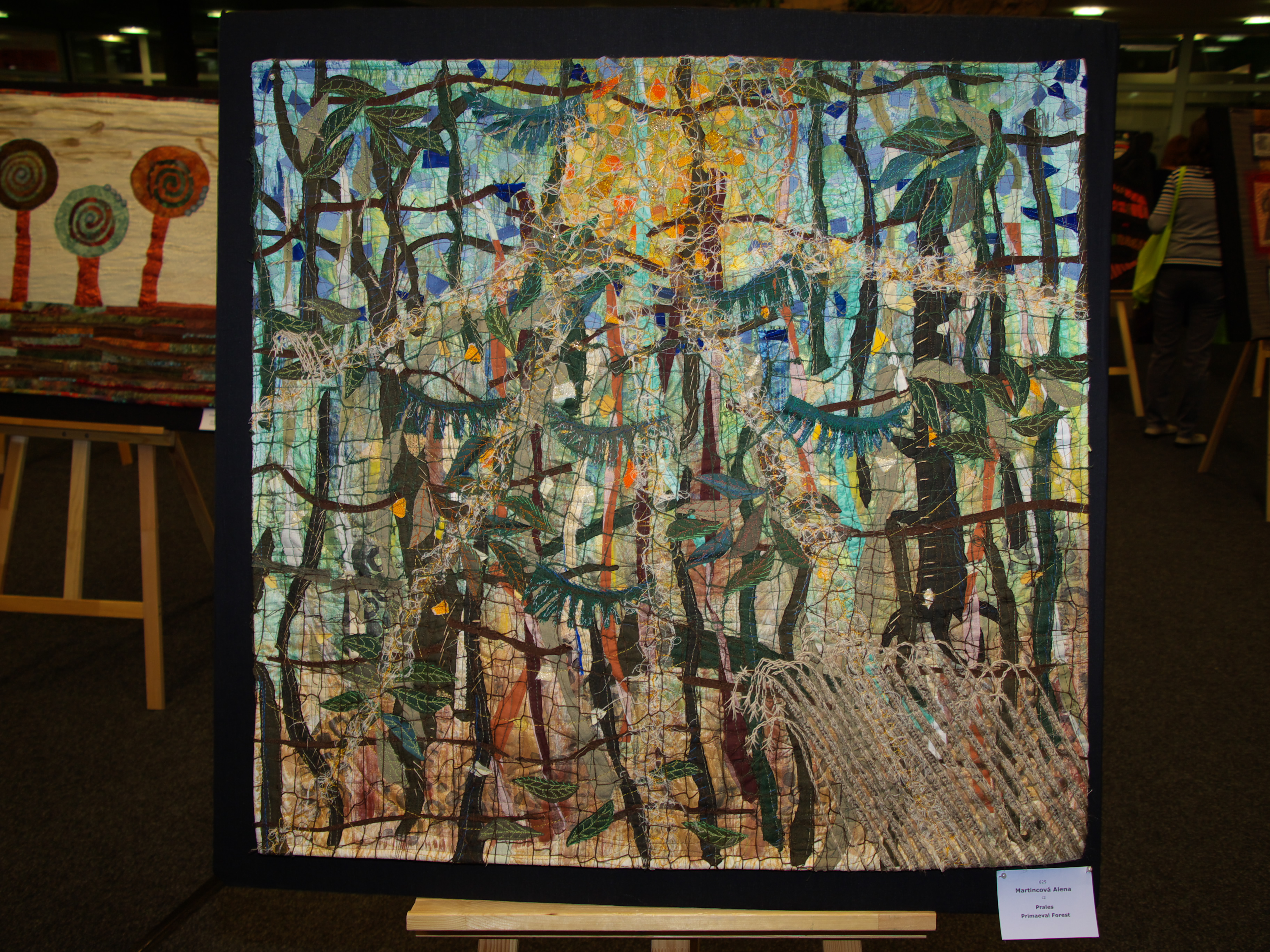
Dulcis in fundo, I would like to close this series of images with something that really touches.
da Brno, Renata Juračková always brings to Prague a refreshing breath of madness. His creations are something unique, and it is unfortunate that it has not yet found the right channels to be appreciated as it deserves.
She shuns the easy harmonies, winking batik, the pleasant combinations, and is not afraid to throw into, with the recovered material where it happens (the old fashioned way so), all his creative energy and the desire to escape from a world too rational and therefore absurd.
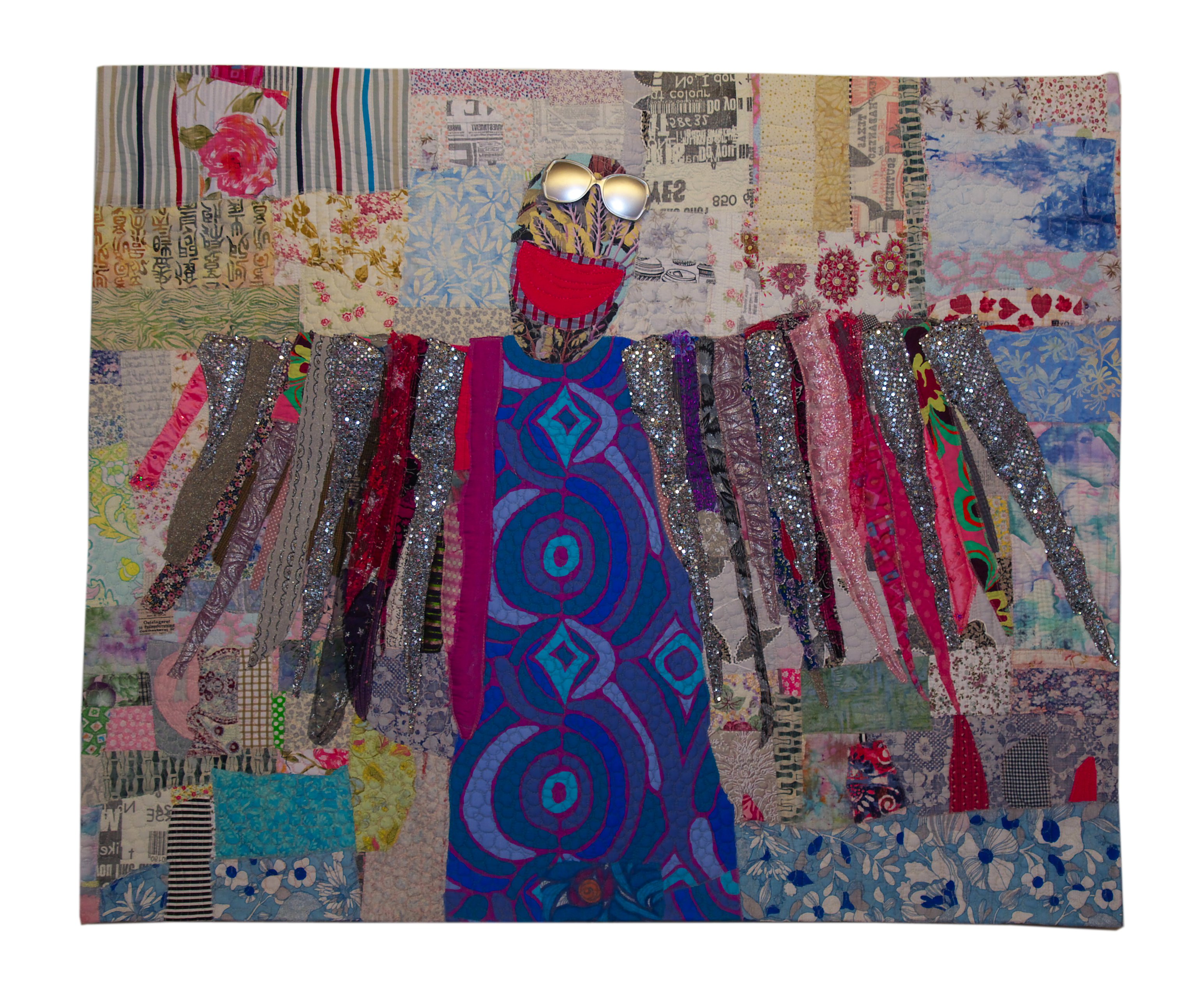 The title of this work is “I flies, I'm floating …” what does it mean “I am flying, I'm floating …”, which he says it all about his outlook on life, and I want to take, visually, as an ideal embrace.
The title of this work is “I flies, I'm floating …” what does it mean “I am flying, I'm floating …”, which he says it all about his outlook on life, and I want to take, visually, as an ideal embrace.
Ecco, here we go again. Whenever I plan to limit the length of post, and yet every time is getting worse.
I still wonder what there might be to say in the future on the Prague exhibition. However I already know that next year we ricascherò, It will once again have the difficult task to select which pictures to enter, so to those who do wrong, to comment, to derive a general sense, and you invent something that has not already been written and rewritten.
The only consolation is that this duty will come after the pleasure, the pleasure of visiting Prague and some other niche in Bohemia, il piacere di constatare che c’è una parte di me che riesce ancora a emozionarsi, il piacere di una birra fresca, di una passeggiata sul lungofiume, il piacere di un tè di zenzero allo Slavia, il piacere di notare che esistono ancora le persone educate, il piacere di muoversi dappertutto senza la necessità dell’automobile, il piacere di scoprire che c’è chi si mette in gioco senza paura e senza boria.
Prima il piacere e dopo il dovere quindi, altrimenti non ci sto.
Un’altro piacere, un po’ sadico a onor del vero, è quello di far conoscere Praga a chi mai c’è stato prima, così, giusto un assaggio per far nascere la voglia di tornarci, una specie di supplizio di Tantalo, che poi sarebbe anche il mio, ma come si dice: mal comune mezzo gaudio.
Those who have never breathed Prague is difficult to include these “withdrawal symptoms”, it takes a complicated and not always serene mood predisposition, because Prague itself is a whole patchwork, It divided a thousand times and a thousand times stitched, always different and never homogeneous, una gestalt composed of an infinity of contradictory aspects, and how they manage to stay so wonderfully well together is a great mystery.
Post Views:
9,672
Like this:
Like Loading...
Related

 L’imperatore Rodolfo II d’Asburgo, prima di perdere il senno, fu un grandioso collezionista e un generoso mecenate.
L’imperatore Rodolfo II d’Asburgo, prima di perdere il senno, fu un grandioso collezionista e un generoso mecenate. It was during the reign of Rudolf II in Prague who started working quality glass, today best known as Bohemian crystal, thanks to the inventiveness of a certain Caspar Lehmann from the Westphalia.
It was during the reign of Rudolf II in Prague who started working quality glass, today best known as Bohemian crystal, thanks to the inventiveness of a certain Caspar Lehmann from the Westphalia.
 La leggenda narra che il povero Giovanni da Nepomuk fosse il confessore della regina. Il re, nutrendo dubbi sulla fedeltà della consorte, nel marzo del 1393 cercò di estorcere a Giovanni i segreti della di lei confessione, non esitando a ricorrere alla tortura. Non ottenendo risposte da Giovanni, il re lo fece annegare gettandolo nella Vltva (Moldava), e oggi nel fiume è visibile la lapide che indica il punto esatto dove Giovanni Nepomuceno, santificato nel 1729, fu gettato dabbasso (quale precisione storica!).
La leggenda narra che il povero Giovanni da Nepomuk fosse il confessore della regina. Il re, nutrendo dubbi sulla fedeltà della consorte, nel marzo del 1393 cercò di estorcere a Giovanni i segreti della di lei confessione, non esitando a ricorrere alla tortura. Non ottenendo risposte da Giovanni, il re lo fece annegare gettandolo nella Vltva (Moldava), e oggi nel fiume è visibile la lapide che indica il punto esatto dove Giovanni Nepomuceno, santificato nel 1729, fu gettato dabbasso (quale precisione storica!).


 The first is purely logistical.
The first is purely logistical.
![]() Ricordo che già da lontano, ancora prima di leggere il titolo, appreciating the chaotic composition of arches and various buildings, immaginai di stare osservando la città lagunare. Complimenti Jana, obbiettivo centrato in pieno.
Ricordo che già da lontano, ancora prima di leggere il titolo, appreciating the chaotic composition of arches and various buildings, immaginai di stare osservando la città lagunare. Complimenti Jana, obbiettivo centrato in pieno. Da una visione naturale a una visione virtuale.
Da una visione naturale a una visione virtuale.



 Jaroslava Grycová realized this impressionist painting by being inspired by the nature of his land, Moravia.
Jaroslava Grycová realized this impressionist painting by being inspired by the nature of his land, Moravia. … seen up close is even worse!
… seen up close is even worse!



 The title of this work is “I flies, I'm floating …” what does it mean “I am flying, I'm floating …”, which he says it all about his outlook on life, and I want to take, visually, as an ideal embrace.
The title of this work is “I flies, I'm floating …” what does it mean “I am flying, I'm floating …”, which he says it all about his outlook on life, and I want to take, visually, as an ideal embrace.




